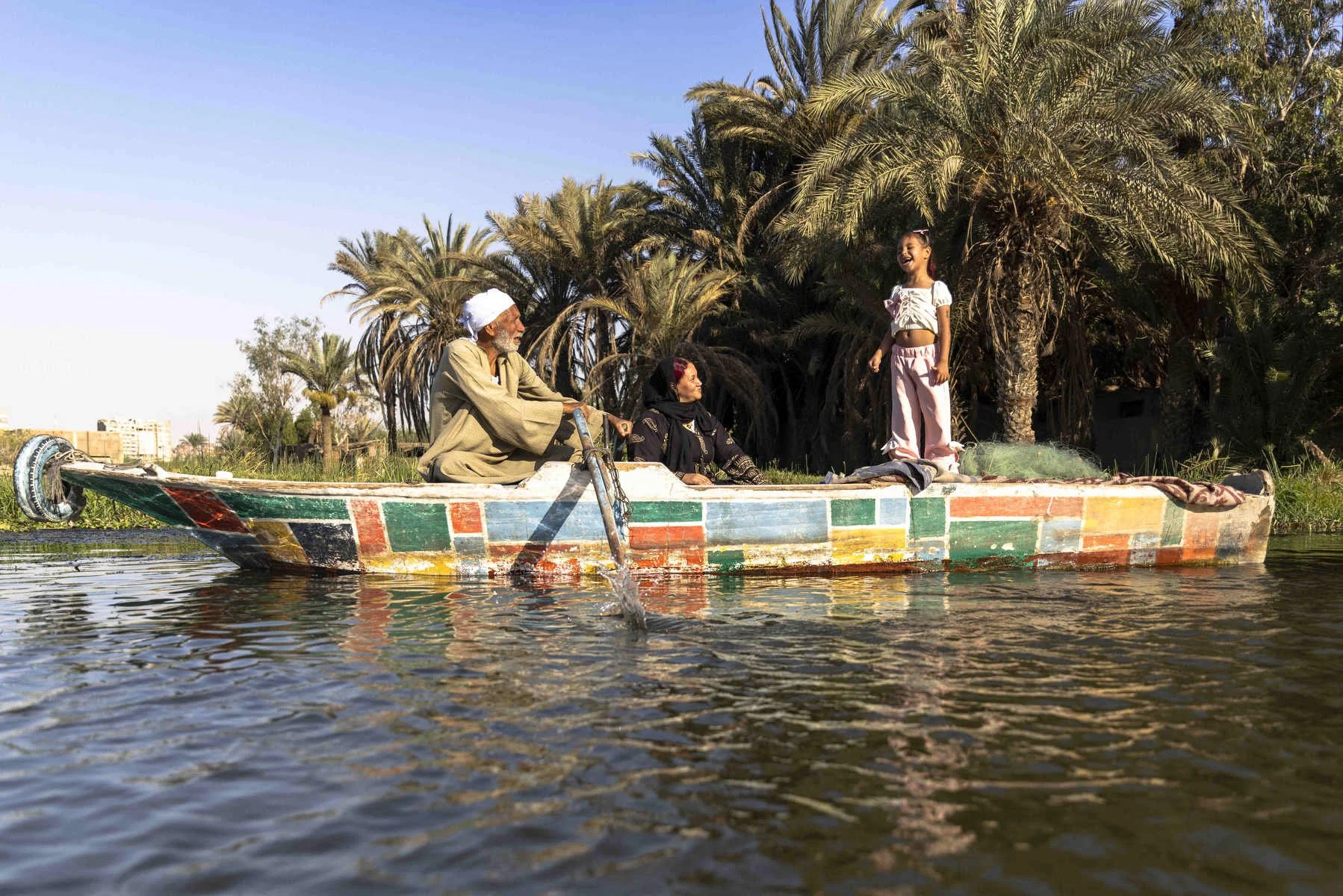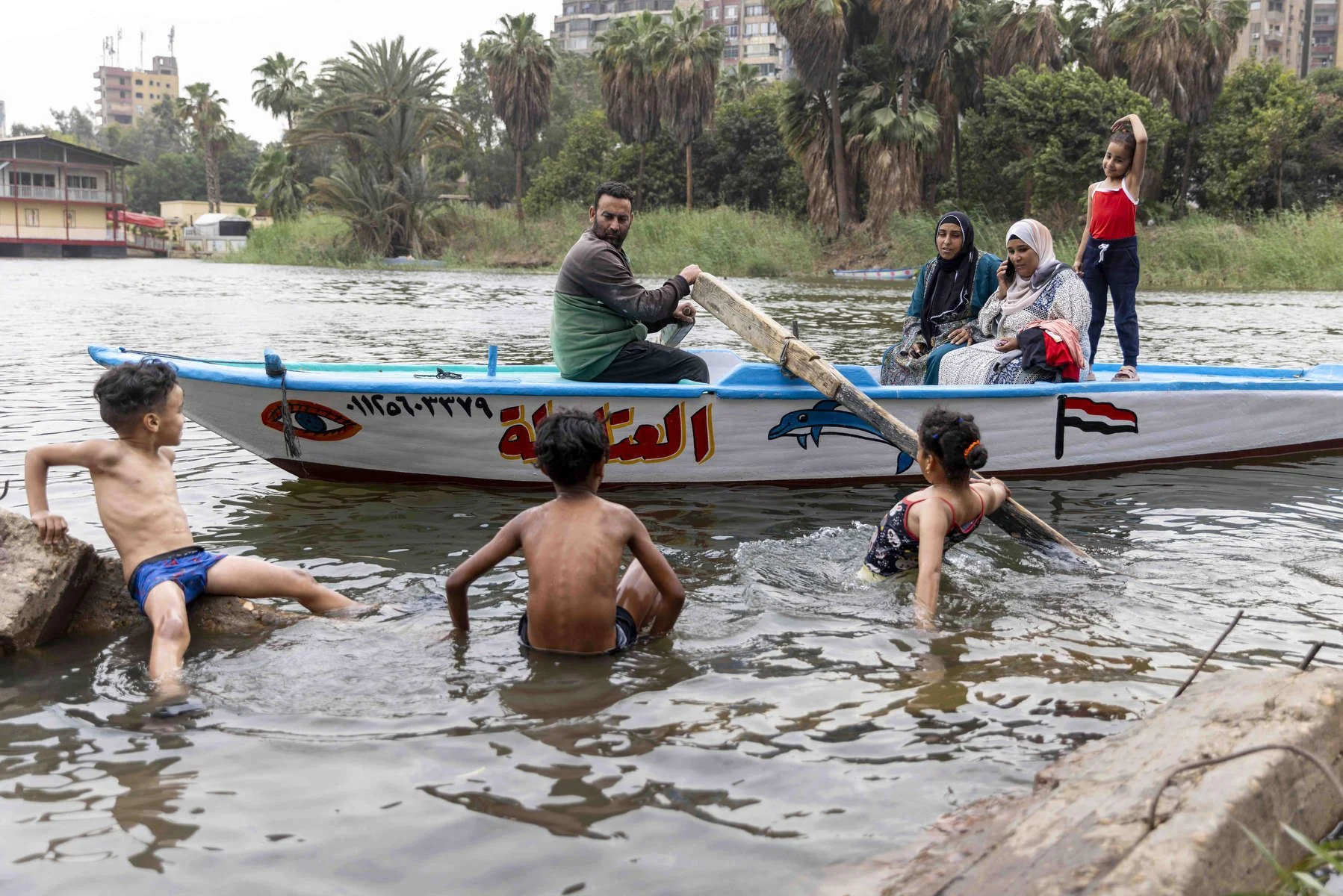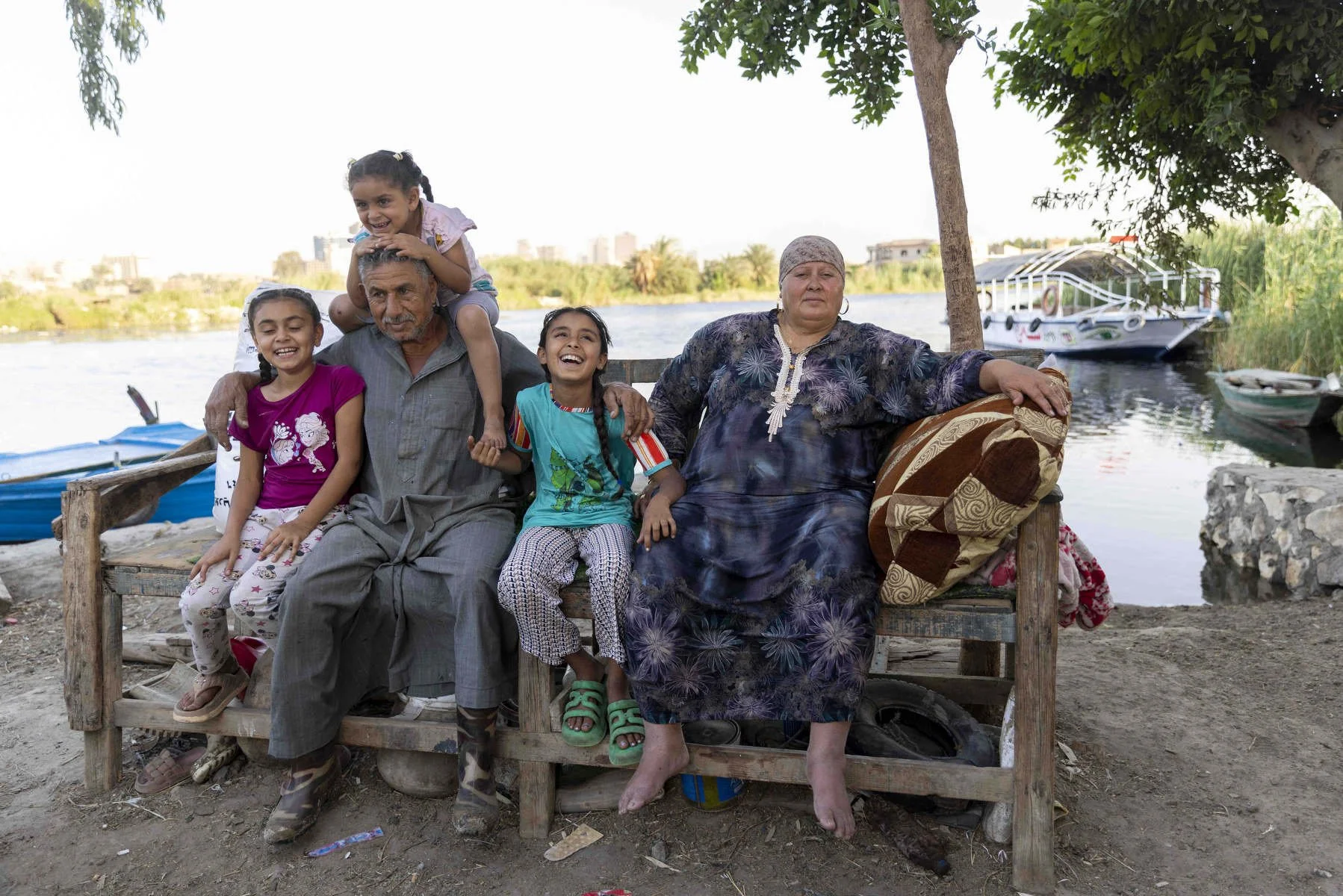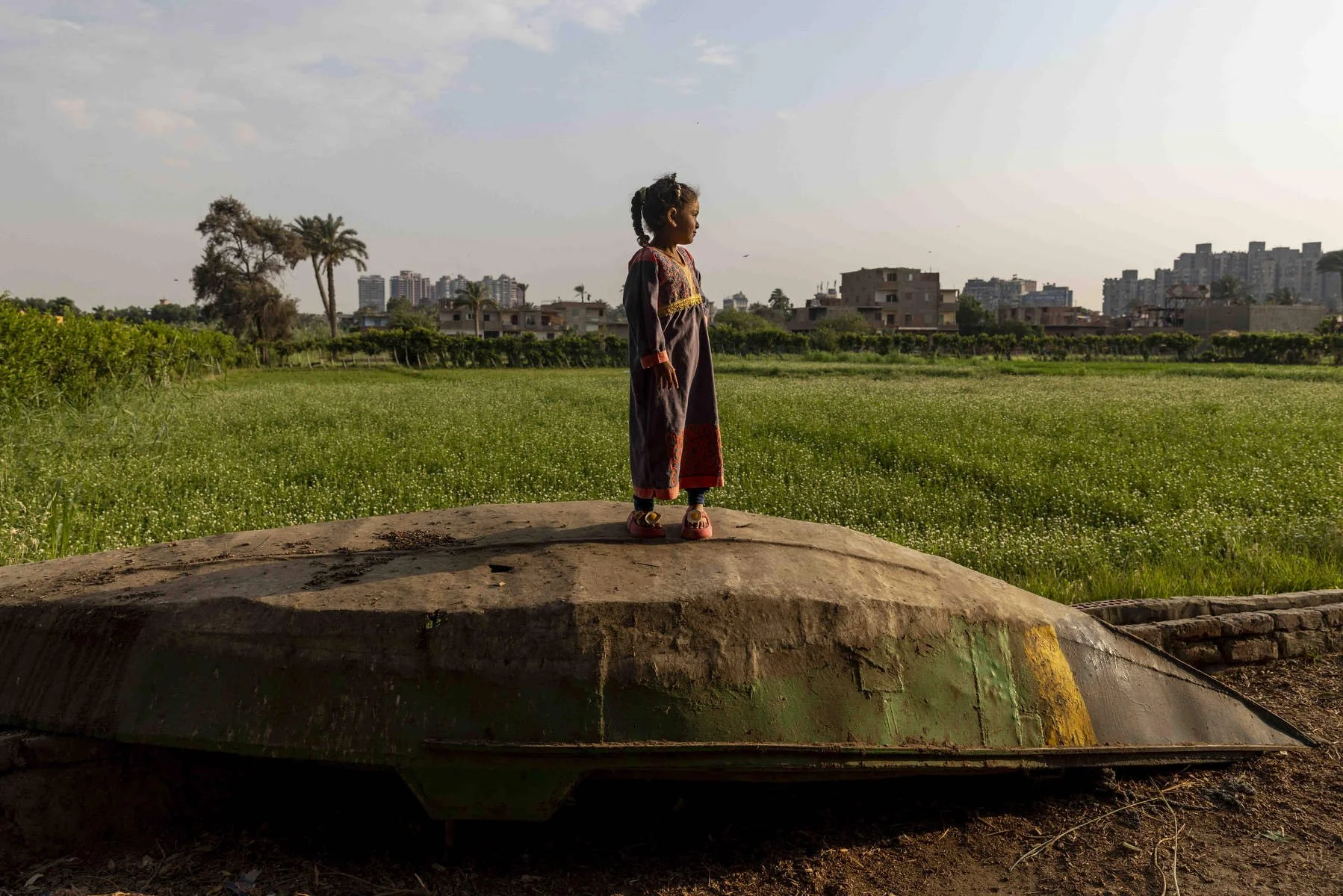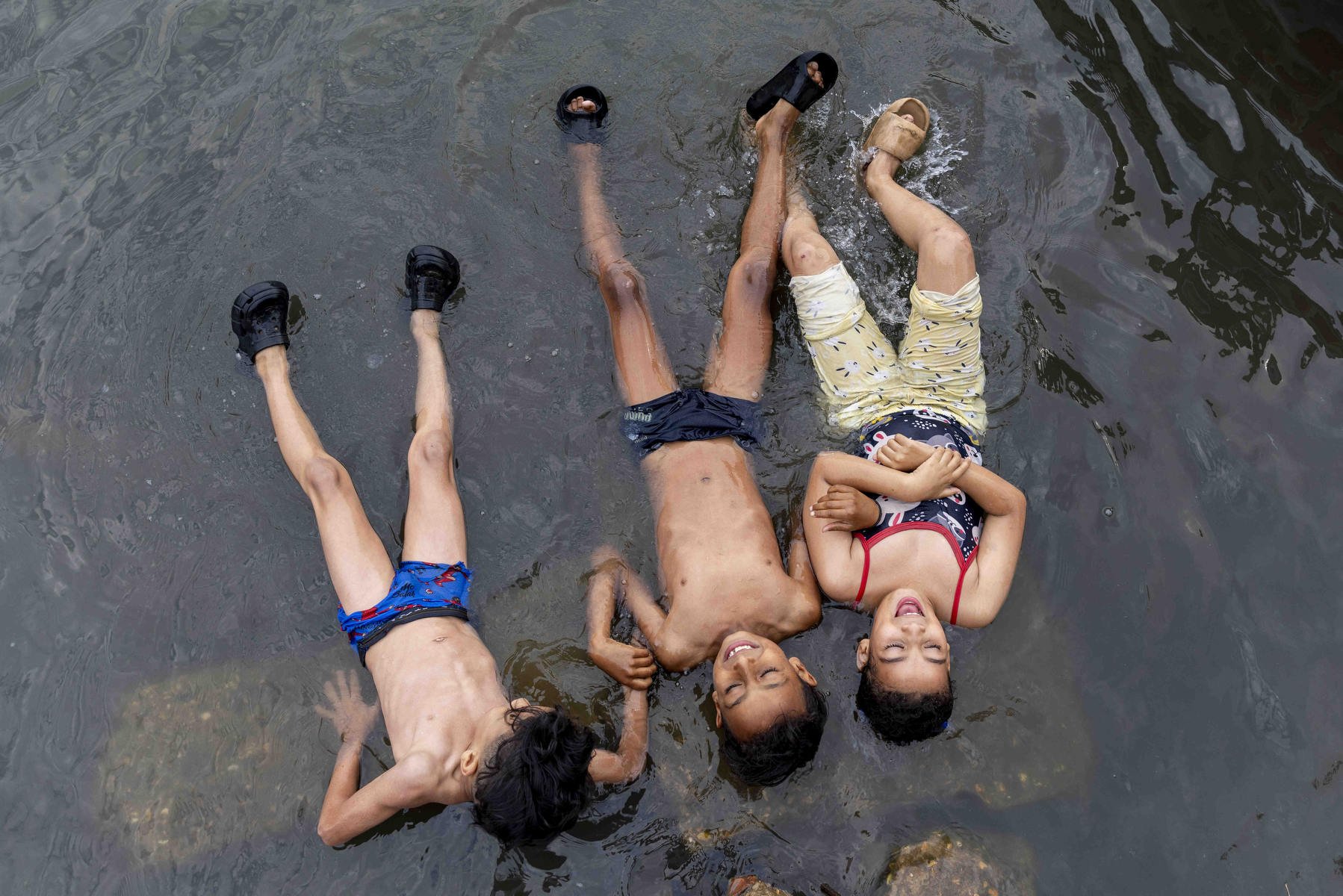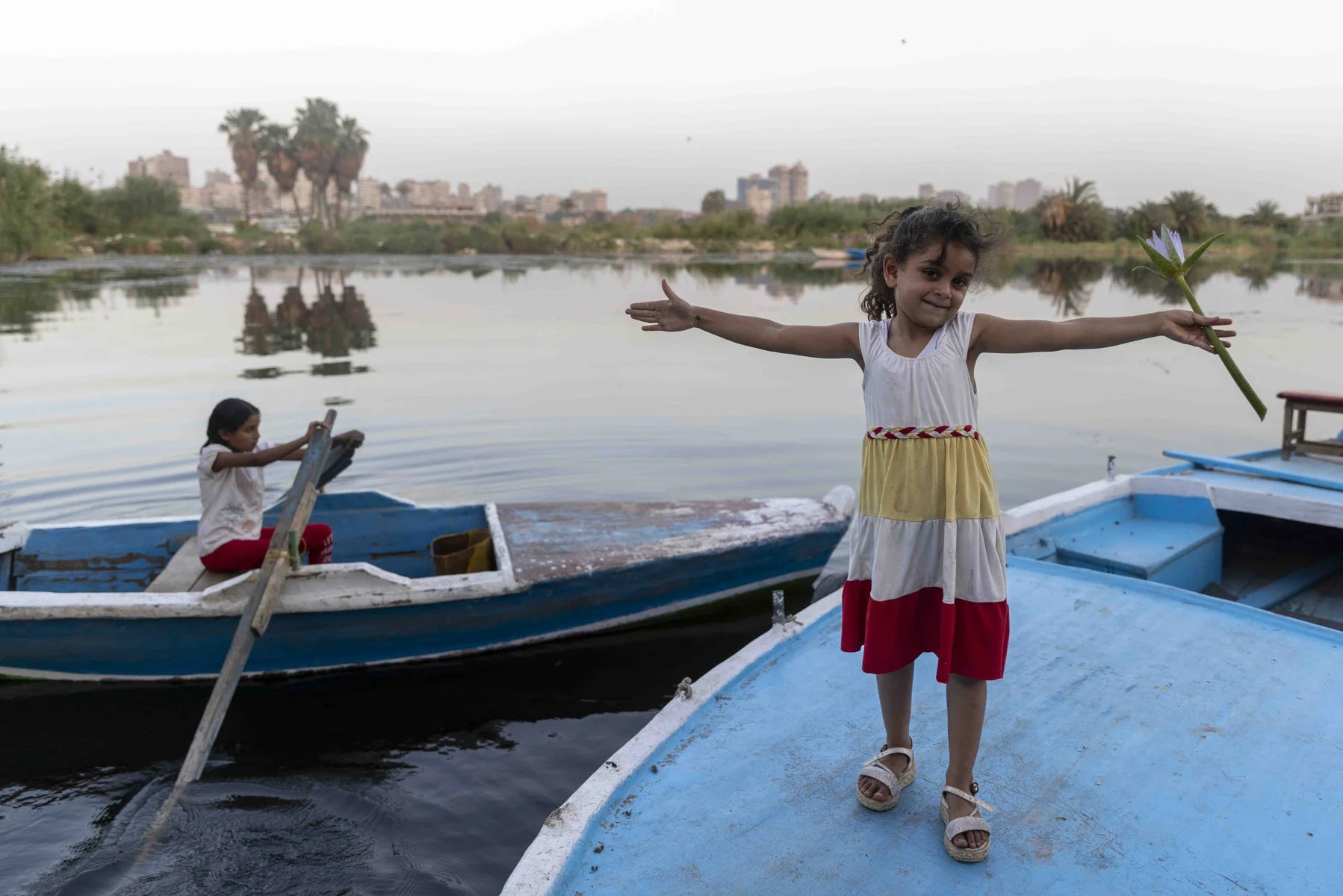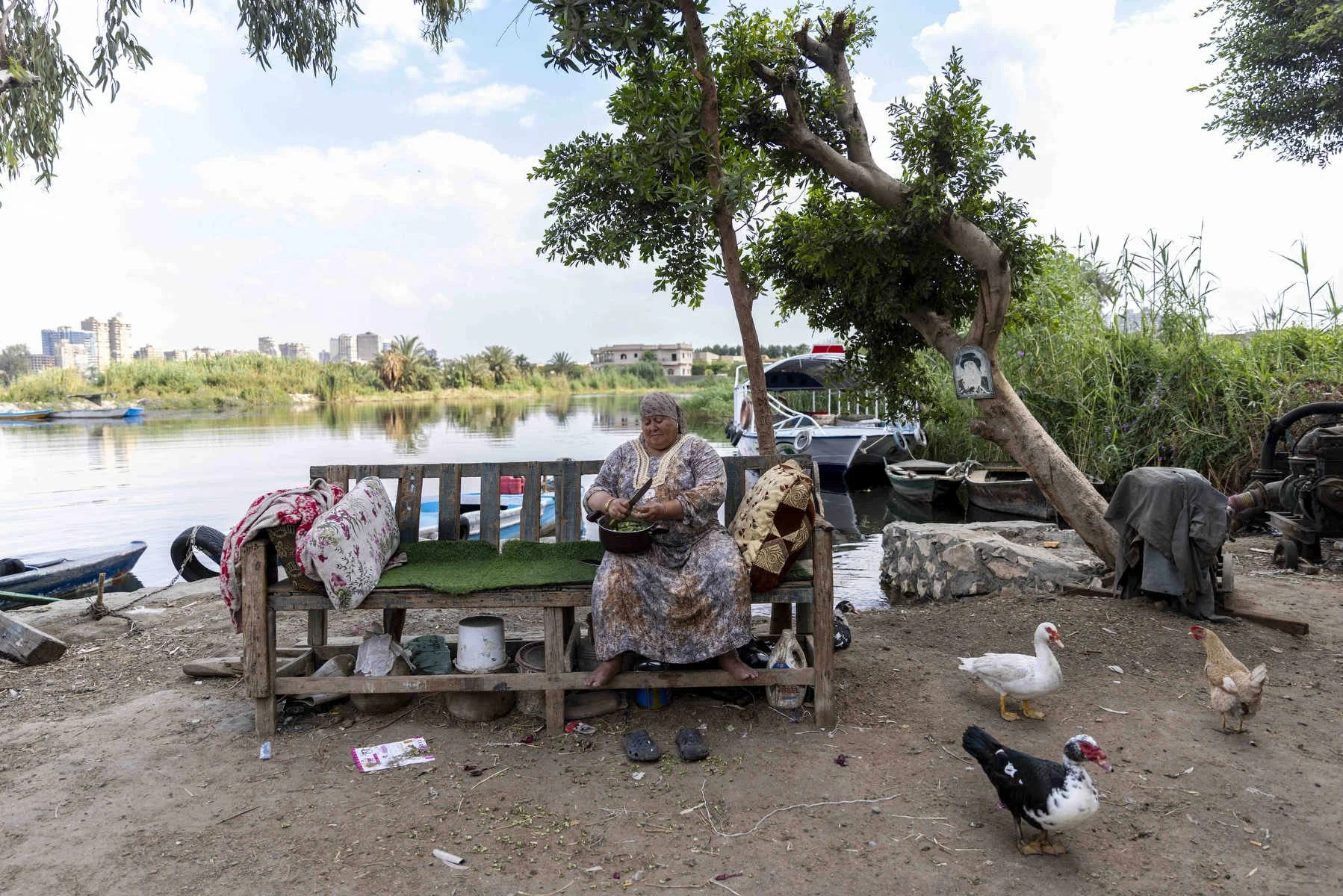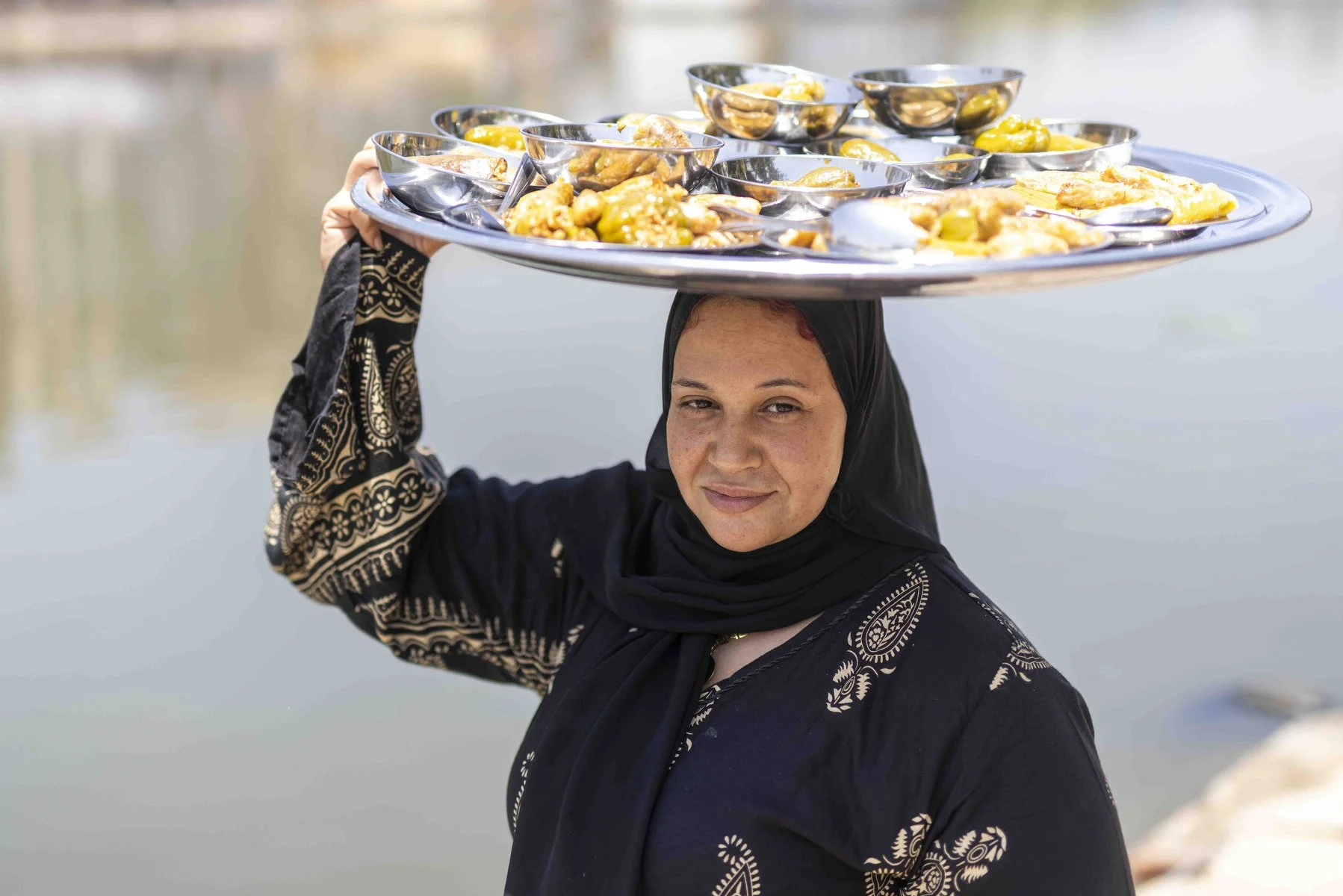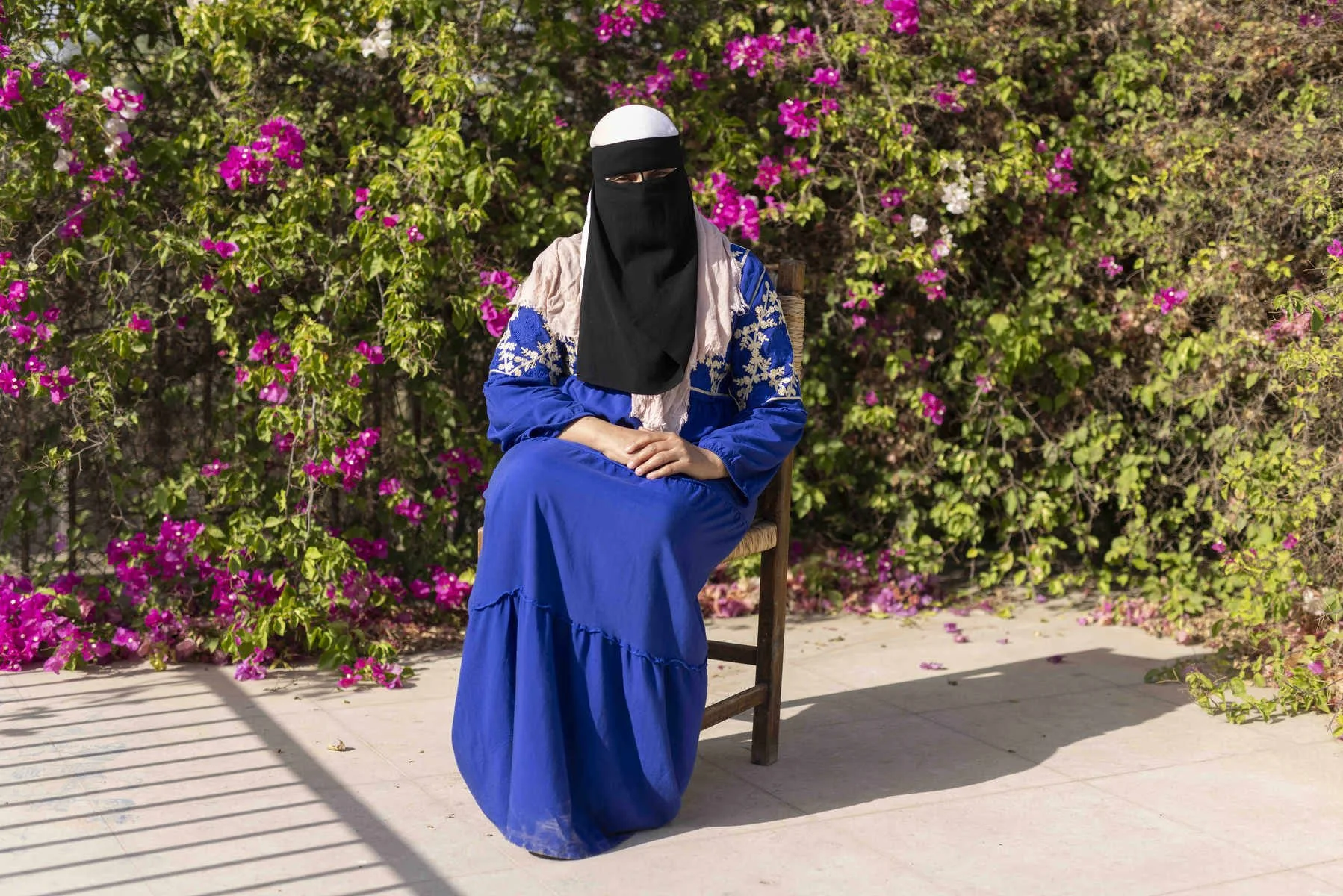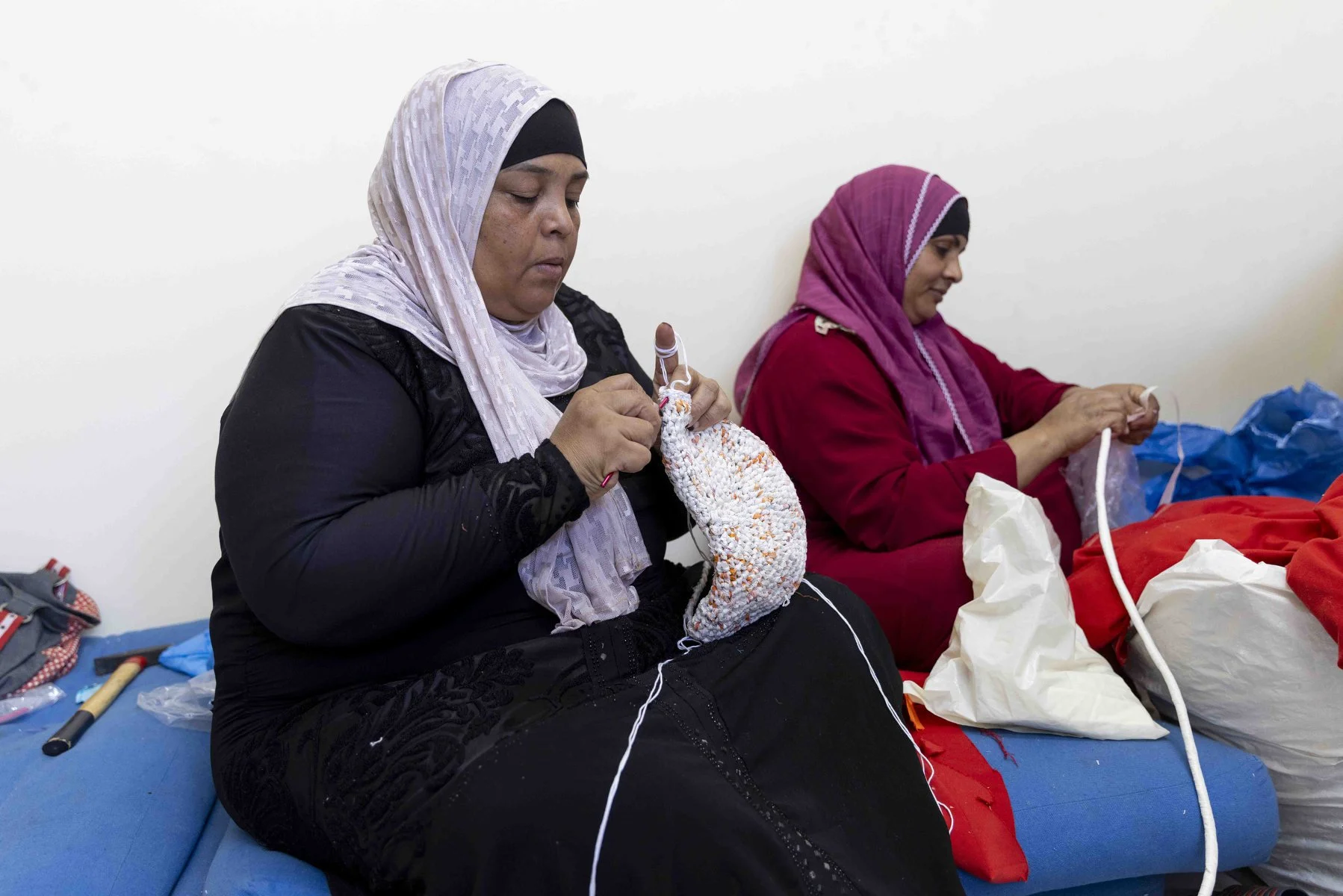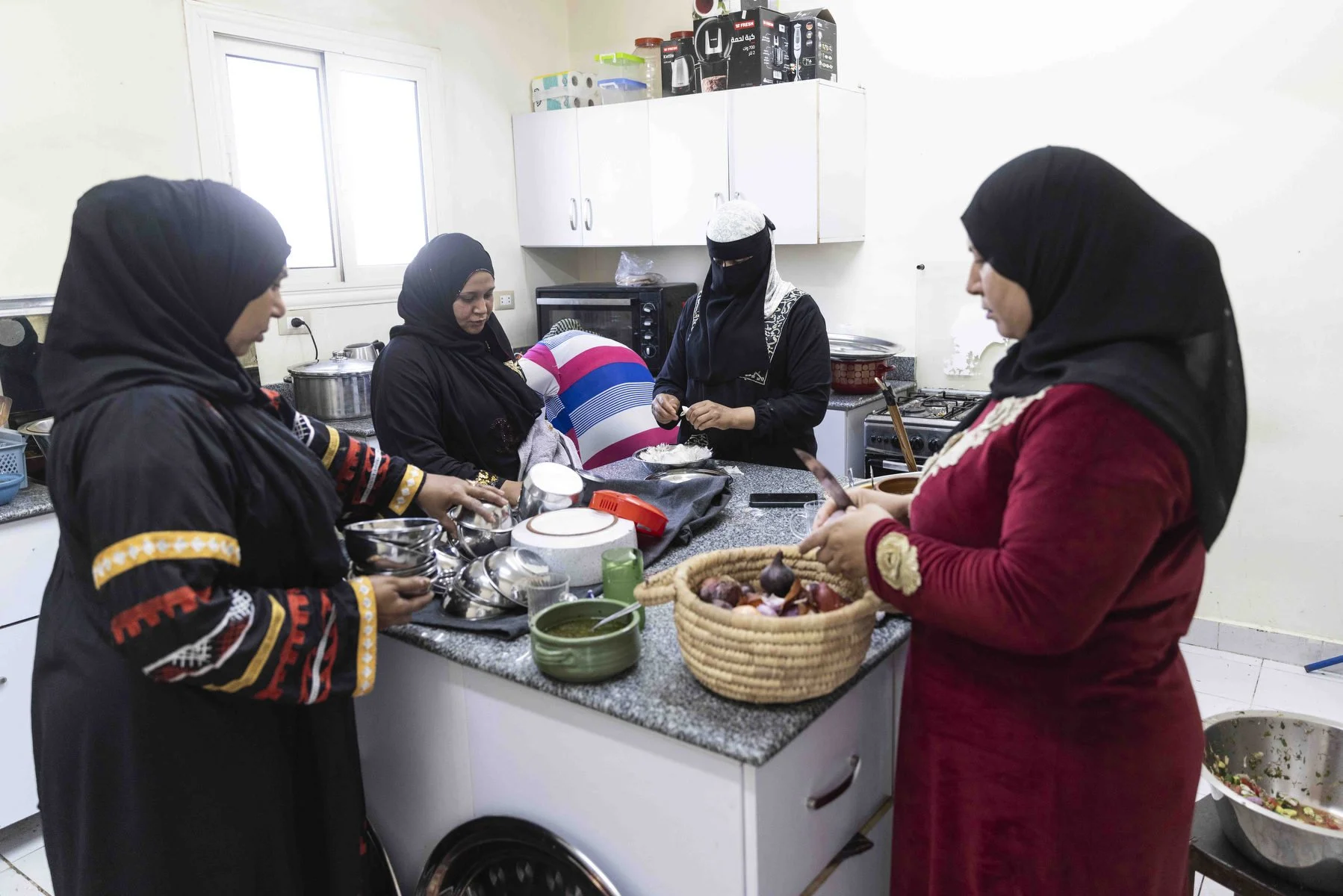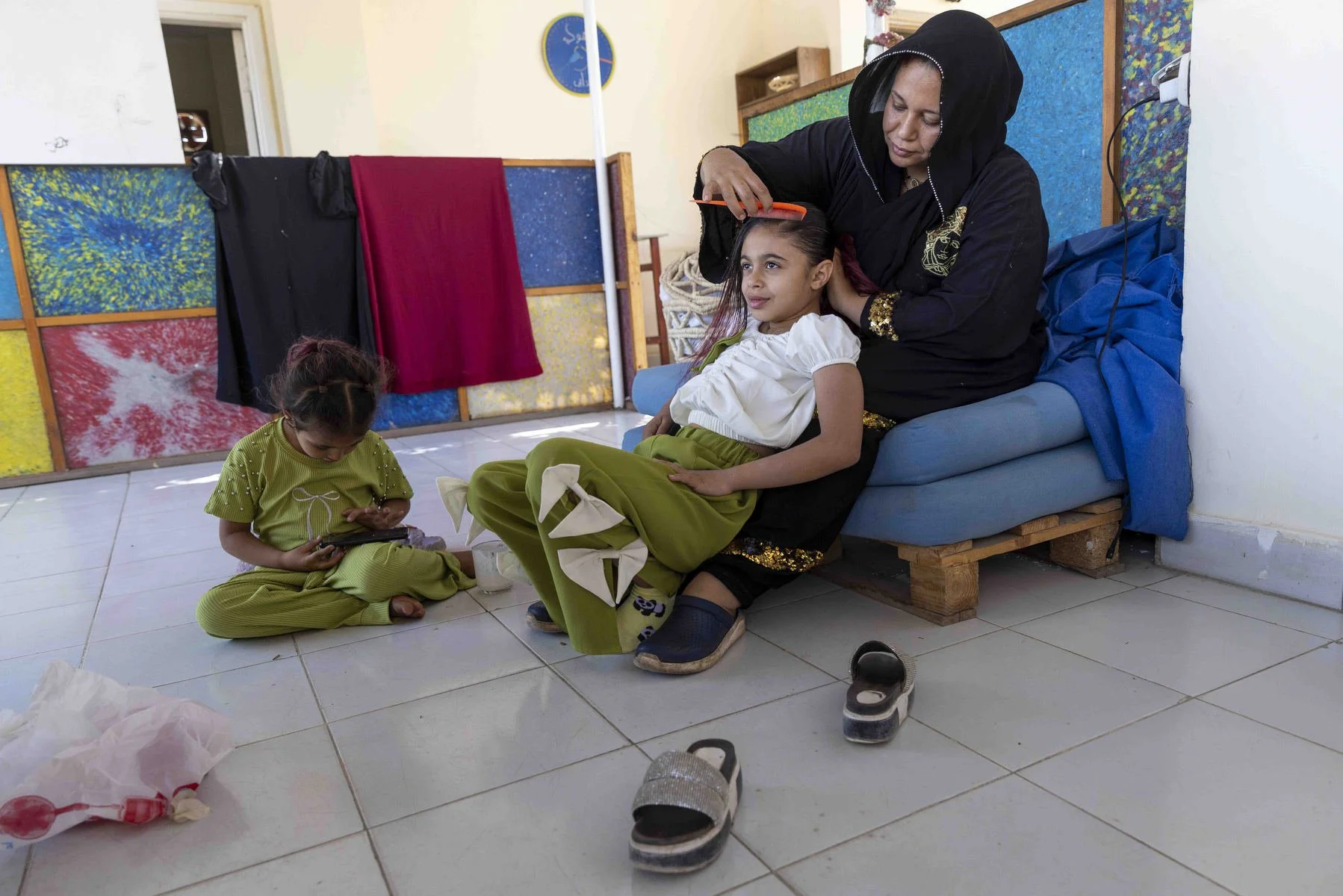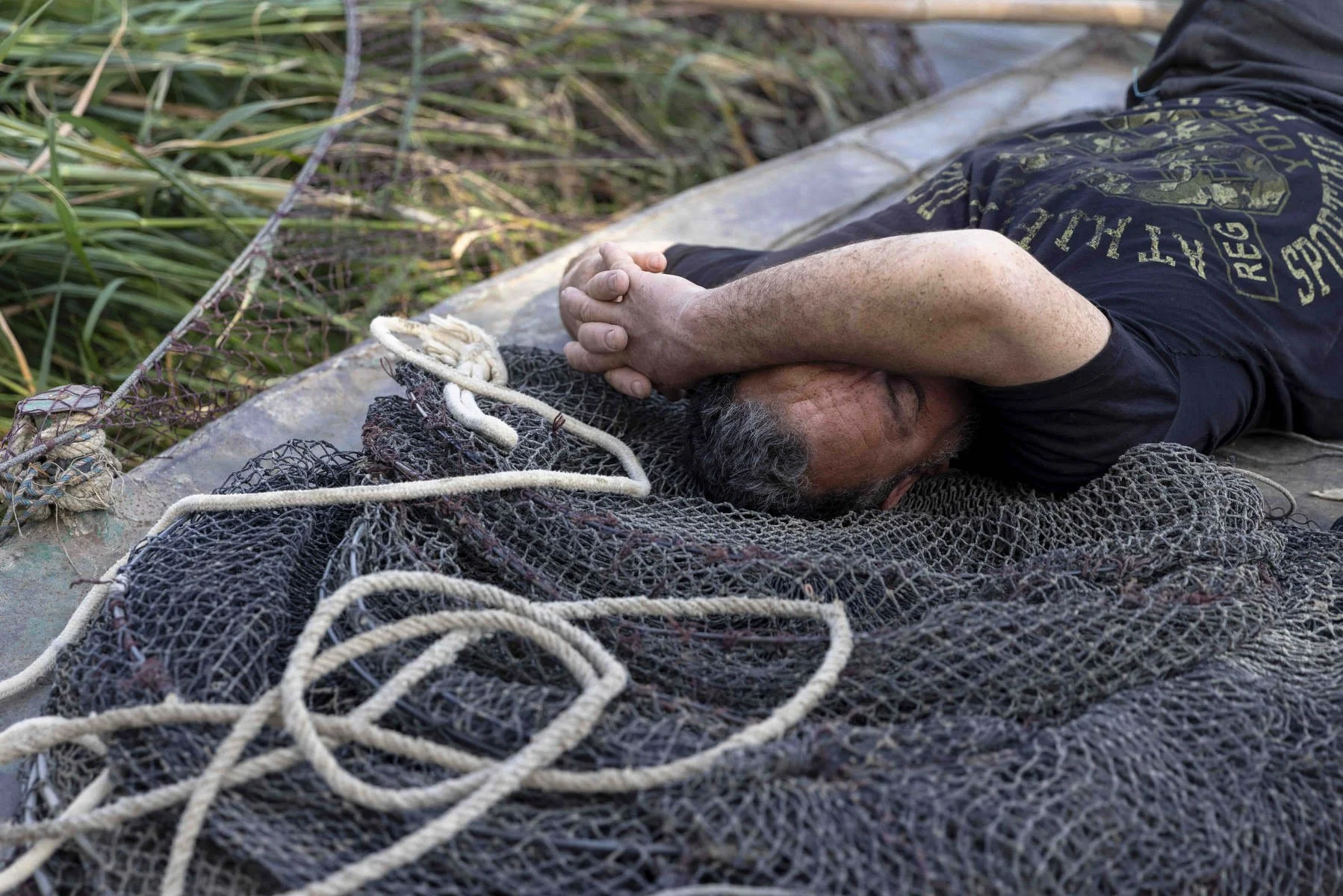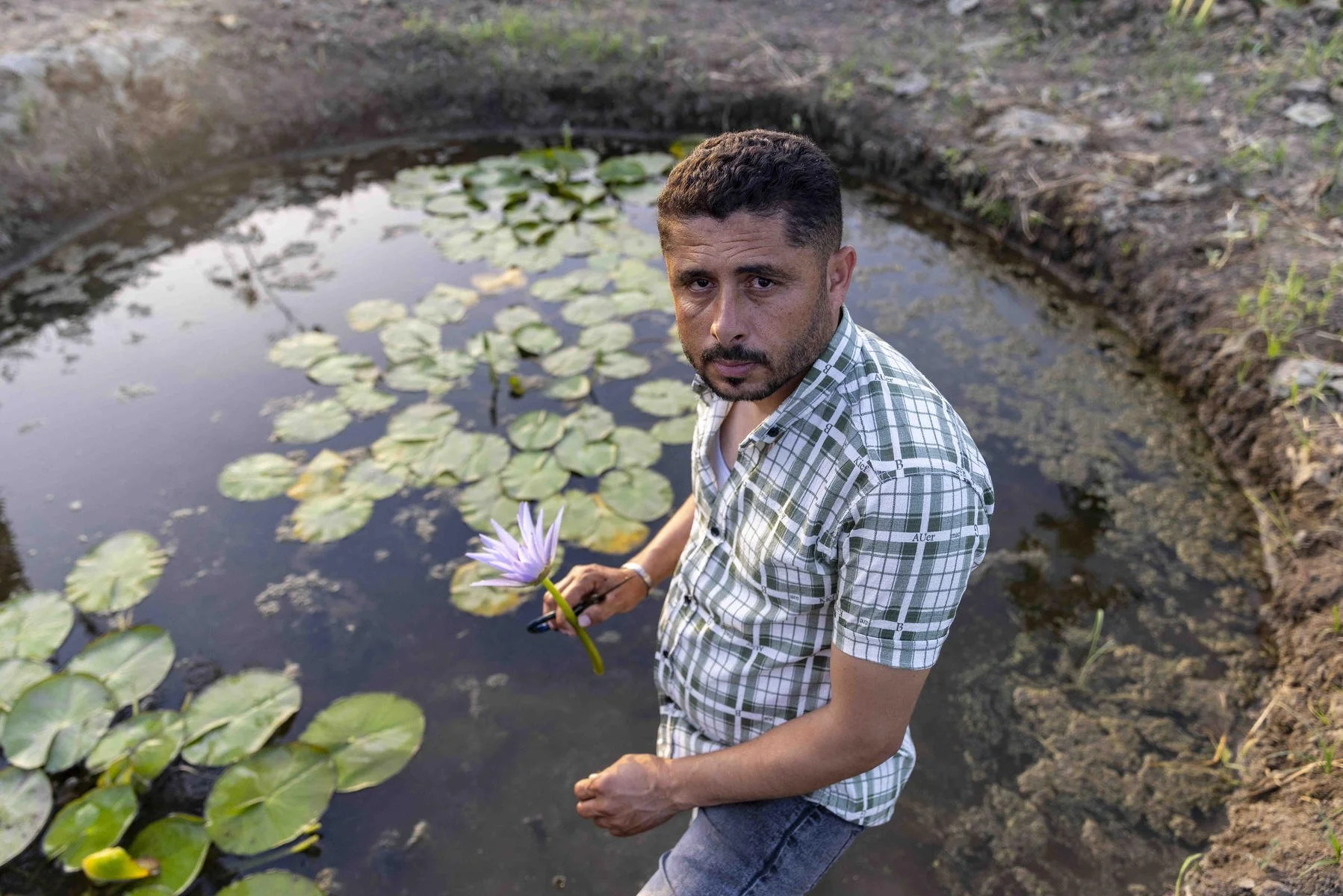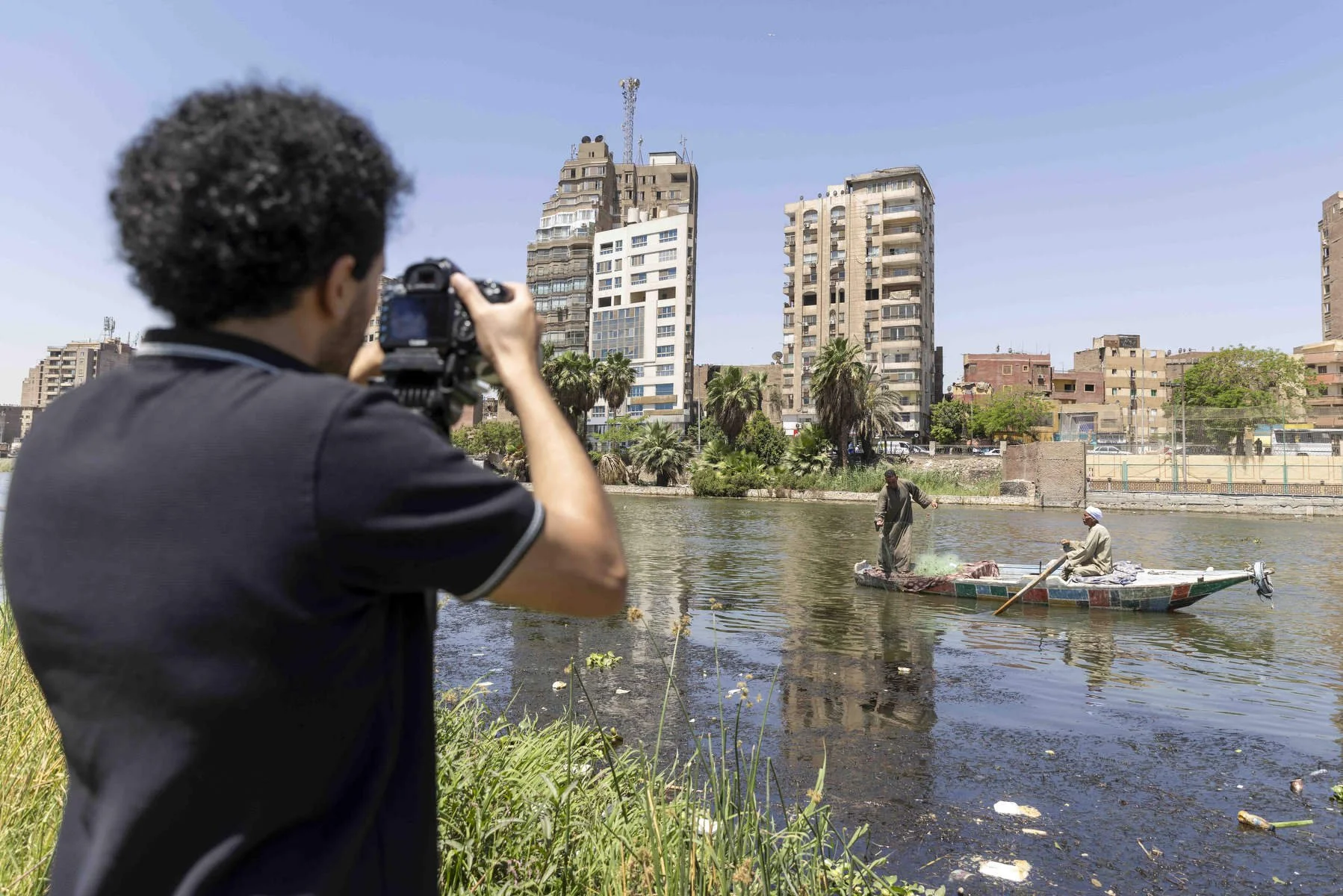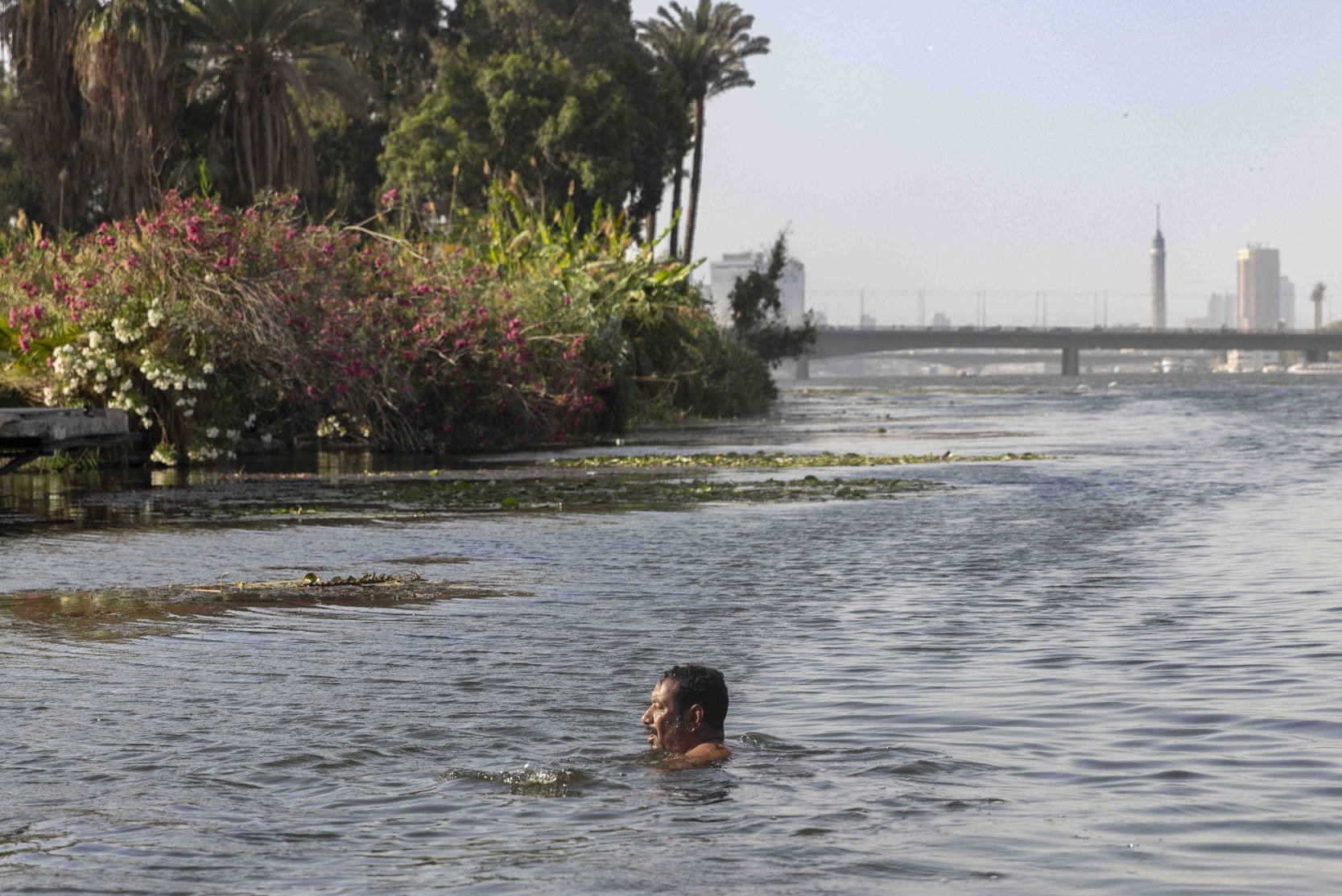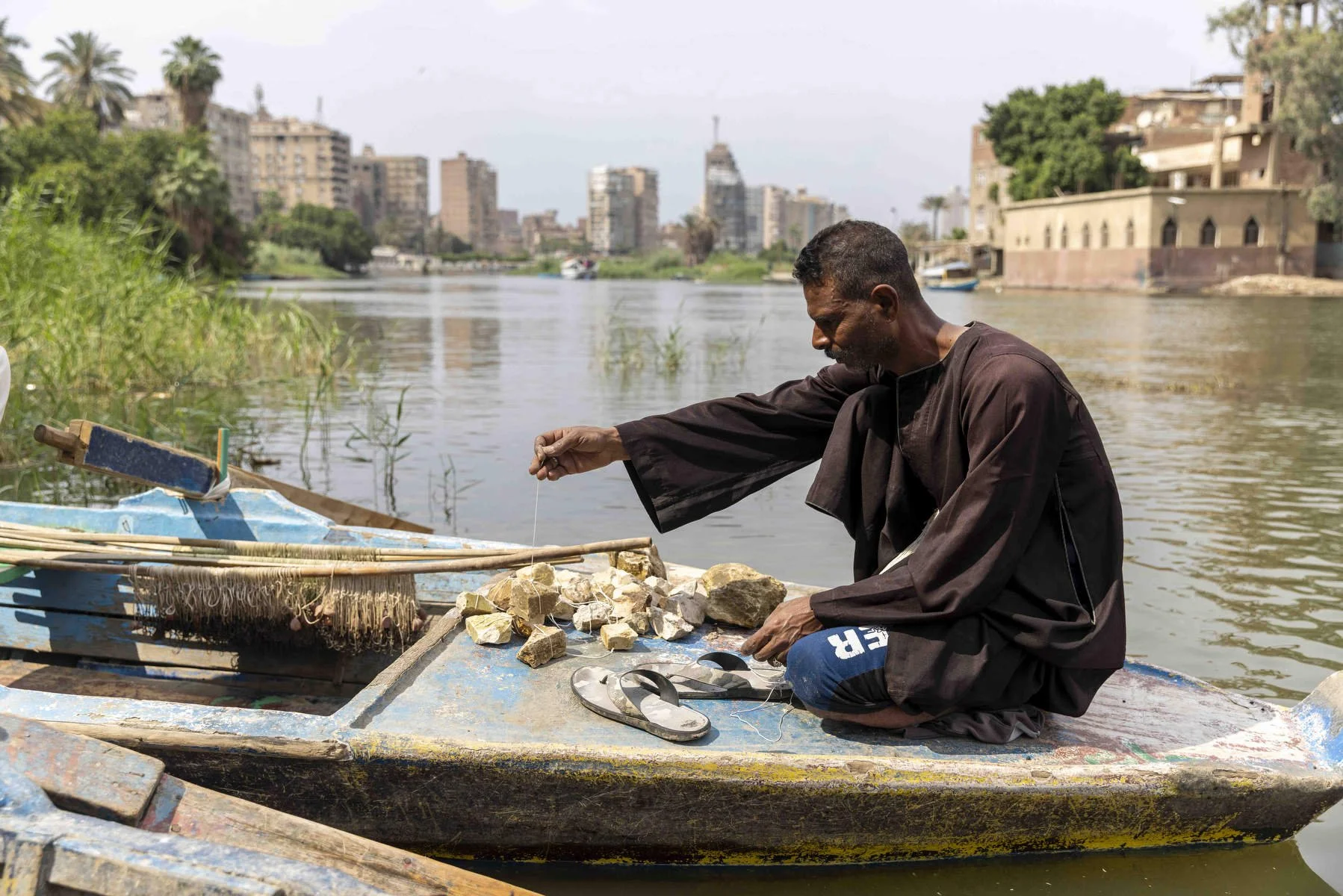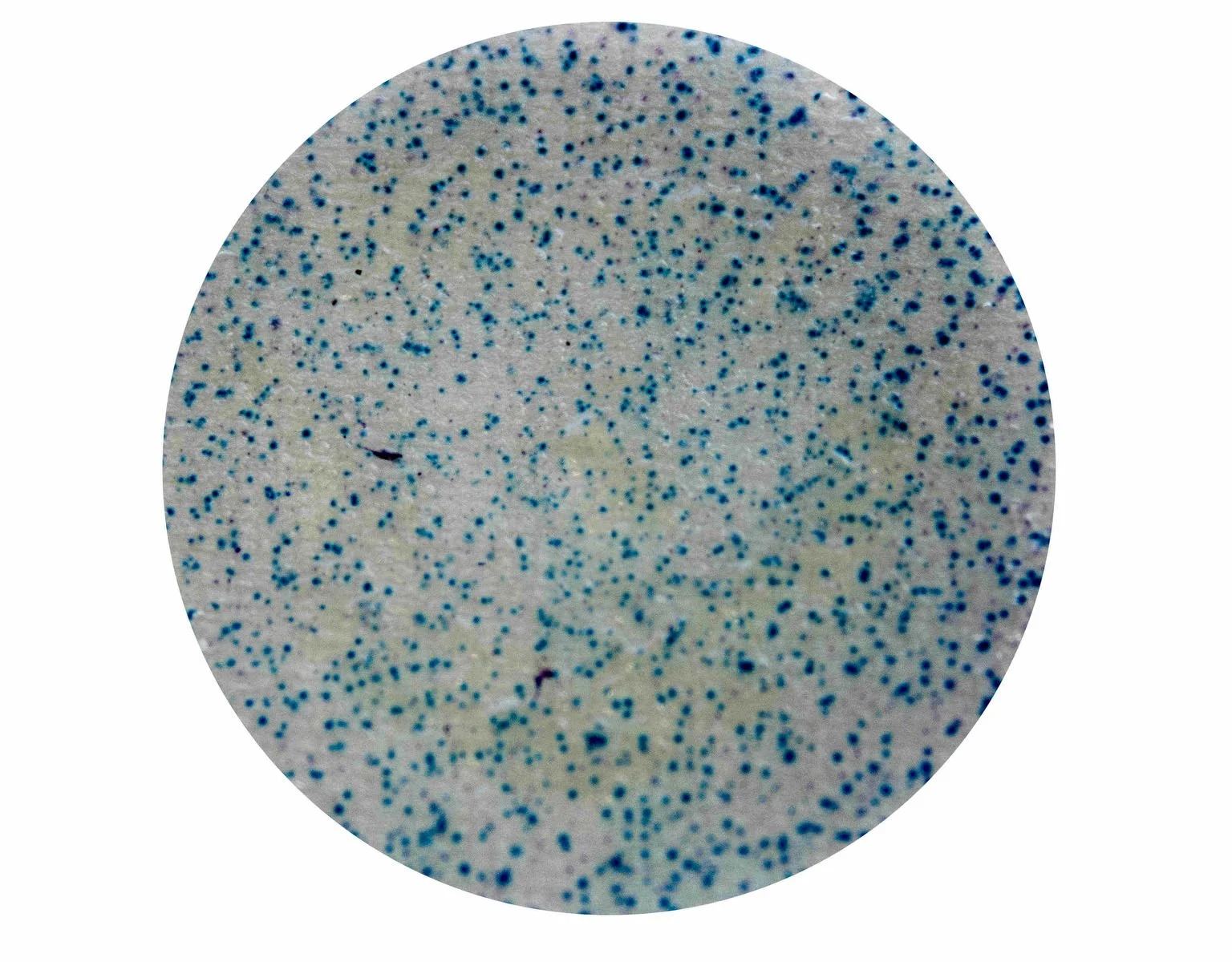
Qursaya, A Microcosm of The Nile
Chapter 4 / 2025 - Ongoing
Over the years, I've tried to tell different stories about the Nile, but I've come to realize that no single project can capture its full complexity. The Nile's narrative is one that never truly ends; it meanders, branches out, and loops back on itself, constantly revealing something new.
In this chapter, without deciding, I found myself going deeper into the Qursaya Island community – something that would never have happened without my collaboration with them on the Nile Parade, which allowed me to get closer to the community and earn their trust, and enabled me to be a part of their lives and stories.
Qursaya Island, which I consider a microcosm of the Nile, is located in the heart of Cairo, a city with over 22 million people. Qursaya feels worlds apart from the hustle and busyness f the capital. It is home to a community of fishermen and farmers and is only accessible by ferry or the small boats of the fishermen.
The VeryNile project, created an initiative for the fishermen to collect plastic waste from the river for recycling, as a source of income. And the Pharaonic Village, a tourist attraction that simulates life in Ancient Egypt, takes us back in time. For me, Qursaya embodies the essence of the Nile, a place where the past and present coexist, where environmental degradation meets grassroots action, and where a community shaped by the river grapples with its deteriorating ecosystem.
Here, you can witness the resilience and adaptability of some of the Nile's citizens in the face of environmental, economic, and political challenges – issues all living along the Nile basin confront in one way or another.
I drew a map of Qursaya, marking key places I worked in and the paths I took with the fishermen: from VeryNile and the fishermen’s village, to Am Sami’s home, the Pharaonic Village, and Emad Hassan’s land.
Qursaya Island wasn’t permanently habitable before the construction of the Aswan High Dam. Am Sami, one of its earliest permanent residents, recalls that the land would only appear when the Nile’s water level was low and disappear again during the annual floods. After the dam was built and the river's flow was regulated, families like his were able to settle there year-round.
The name Qursaya comes from its small, round shape, resembling a ‘qursa,’ the colloquial Egyptian word for a small round loaf of bread.
Am Sami remembers how the island’s early community was formed by eight founding families, including his own. One of them, the family of Abu Bakr, eventually sold their land to newcomers from Upper Egypt, who later established what’s now known as Ezbat al-Sayyadin, the Fishermen’s Village.
Today, Qursaya is home to less than 3,000 people, including a mix of fishermen, farmers and workers who commute to the city daily, a few wealthy landowners, and some artists who live or work on the island.
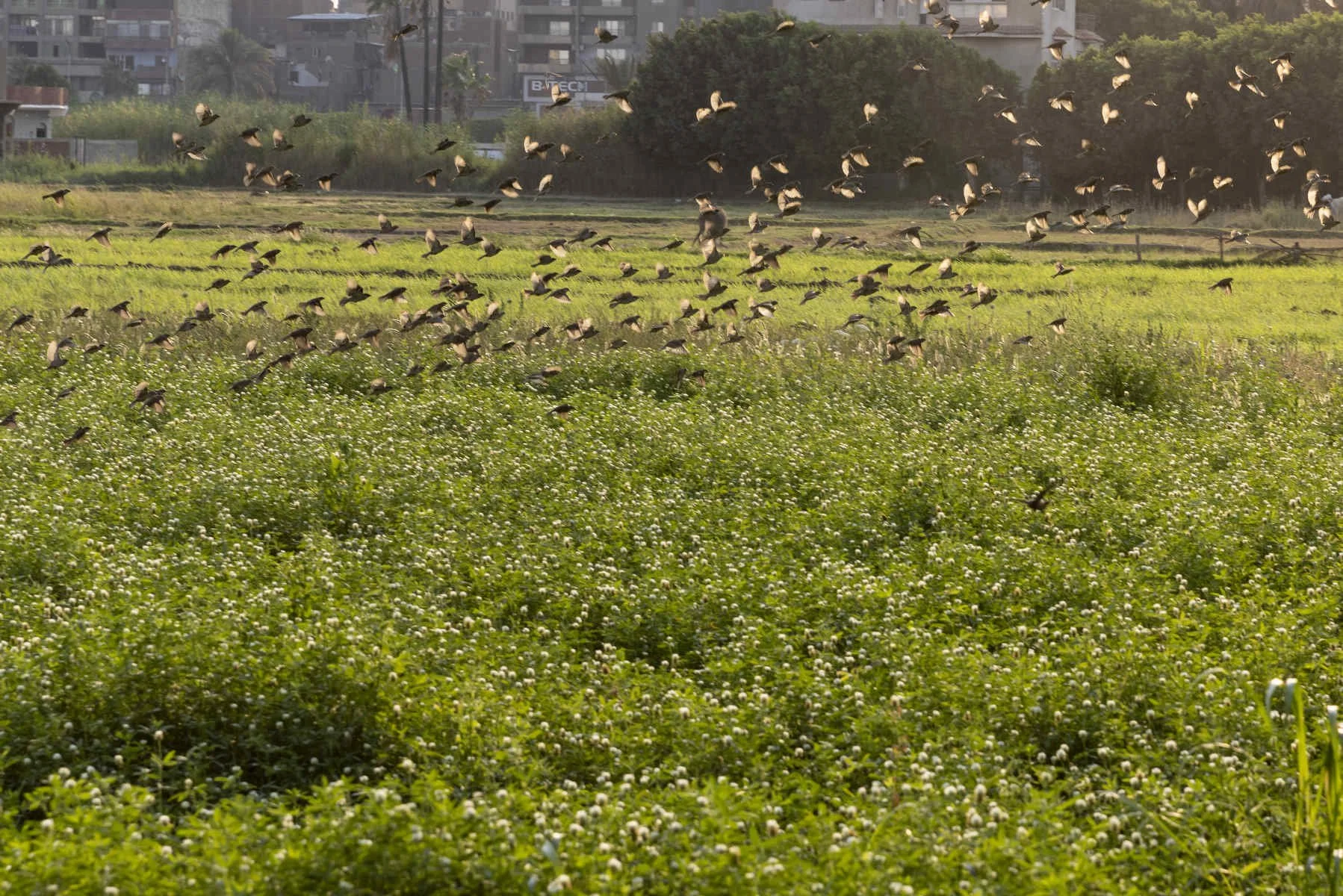
“During the summer floods, we used to move to Dahab Island because Qursaya would almost disappear under the water. We only came back when the Nile withdrew,” Am Sami recalls.
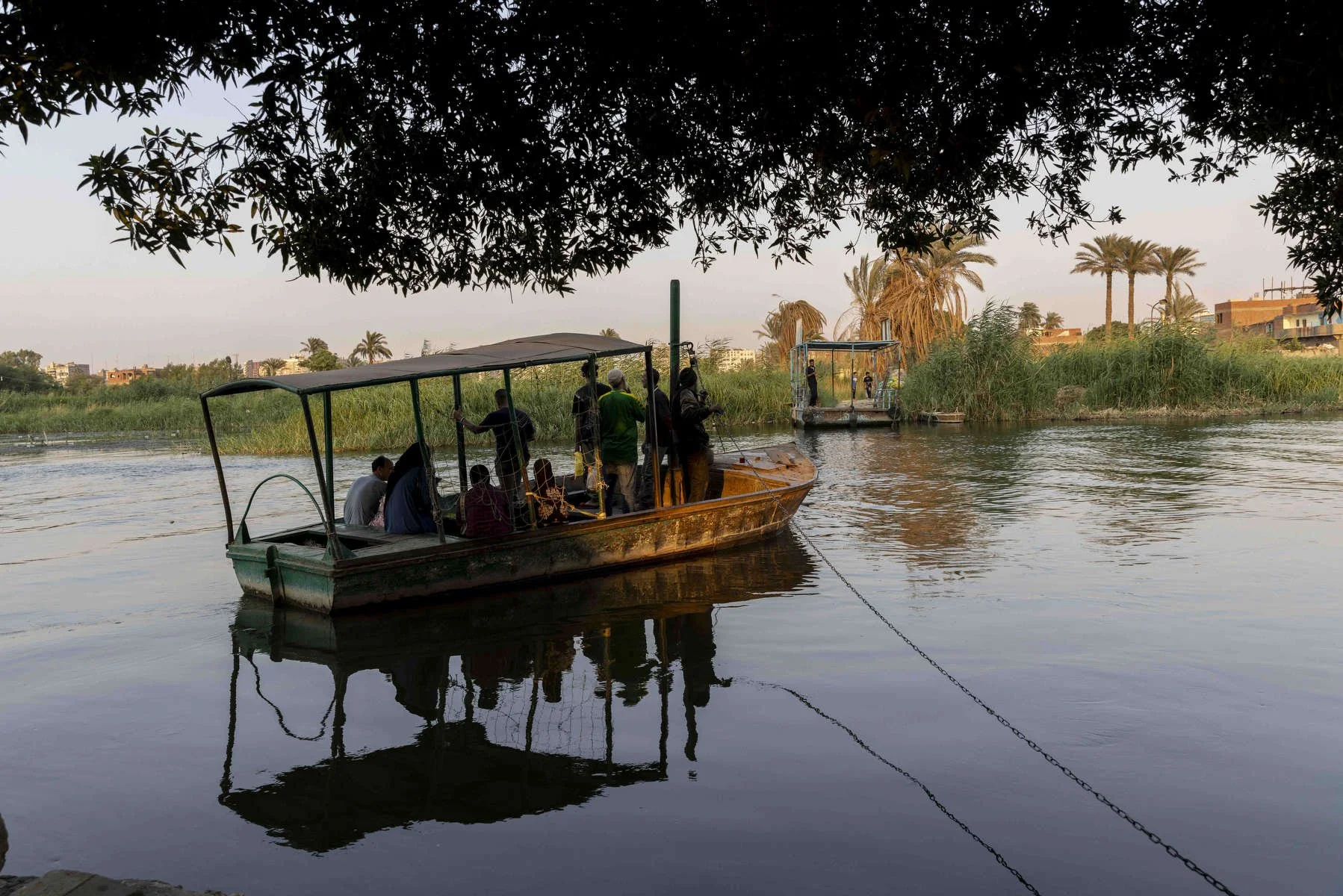
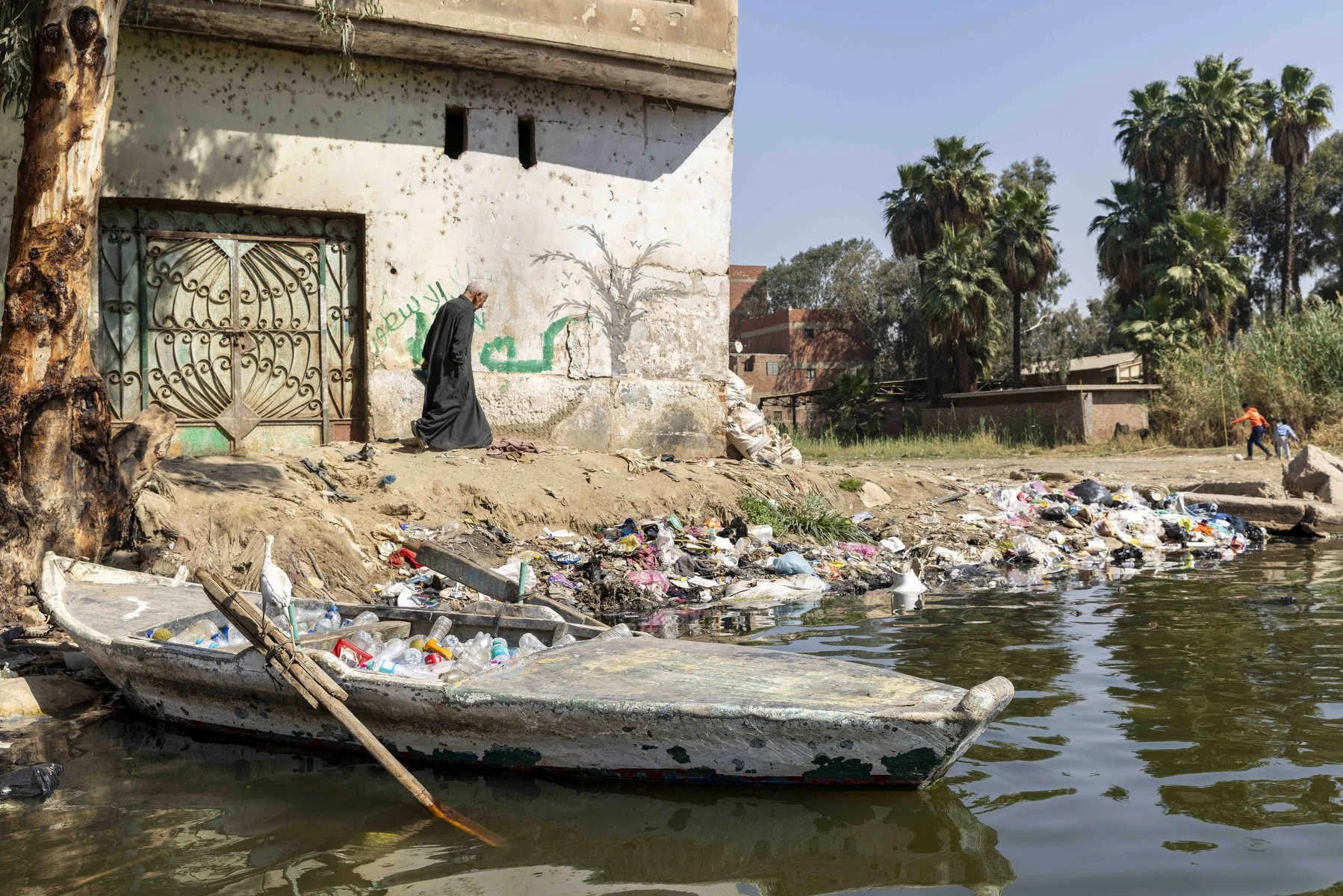
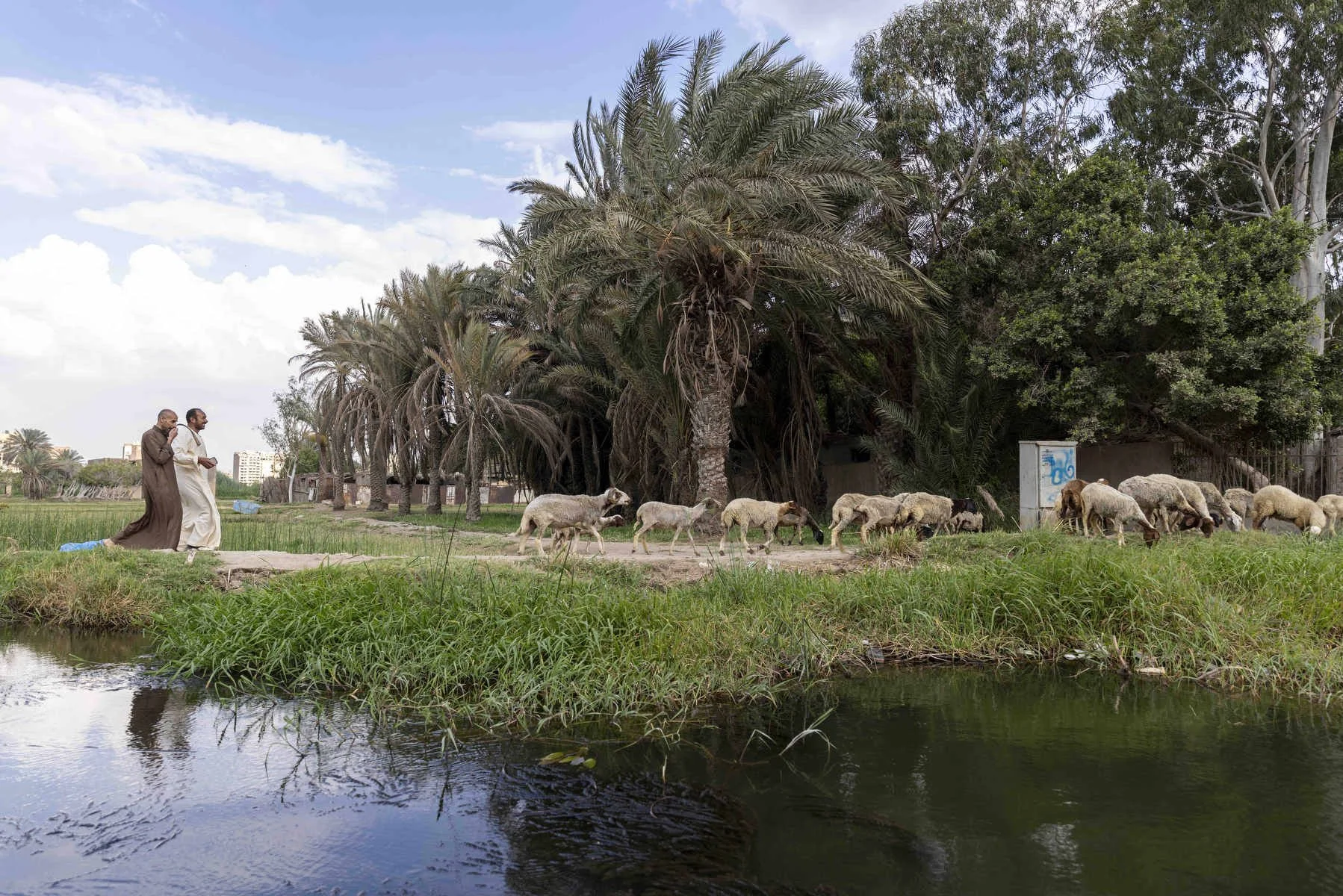
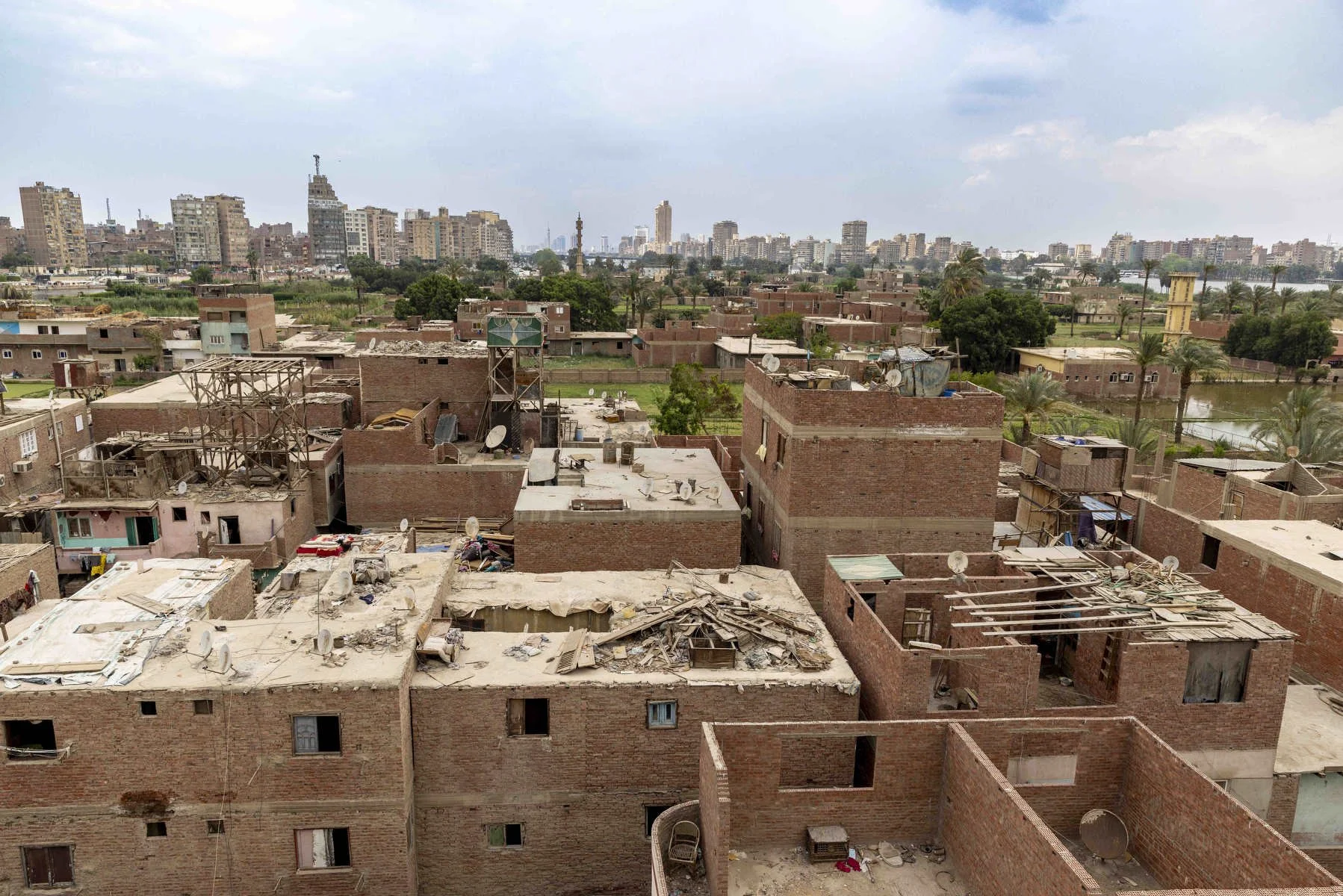

Families in Qursaya
Families in Qursaya are generally divided into the original families – the first people who settled on the island, like Am Sami and a few farming families – and the fishermen’s familites. They all live in close-knit clusters, often side by side. Many of them share homes with their extended families, siblings, spouses, children, and parents – all living under one roof.
Children in Qursaya
Being born and raised next to the water is one of the most precious things anyone can have, especially in a city like Cairo. But for the children of Qursaya, the Nile is simply part of their everyday life. It’s their home, their playground, and the path they take to school. Some of them even drop out of school because they fall in love with the river early on, and decide to become fishermen, even as kids.
In a conversation with Emad, one of the island’s residents who lives alone while his family stays in another city, he shared why he chose not to raise his children on the island: “Kids here grow too attached to the water,” he says. “They forget about school, and the island’s services aren’t the best. It’s not the safest place for children.”
Many of the fishermen’s sons leave the island to work in Cairo, but most eventually return to the Nile. For them and for their families, the river represents true freedom.
Women in Qursaya
Most women in Qursaya Island don’t work outside of the island. Many help their husbands and families with domestic tasks and post-fishing work, like sorting and processing the catch. When plastic waste collection started with VeryNile, some women began working alongside their fisherman husbands to sort the plastic waste.
While many women would like to work outside the island, job opportunities are limited, and cultural norms often prevent them. However, the presence of VeryNile created new opportunities. For example, Om Nada began by cooking meals and selling them. From there, she started Shoka w Meqdaf, a small restaurant run under the VeryNile initiative. She now works alongside other women, some of whom also joined the plastic recycling workshop.
Given the economic and social challenges, work is essential, not just to support their husbands, but because many women are the primary breadwinners for their families in the absence of a partner.
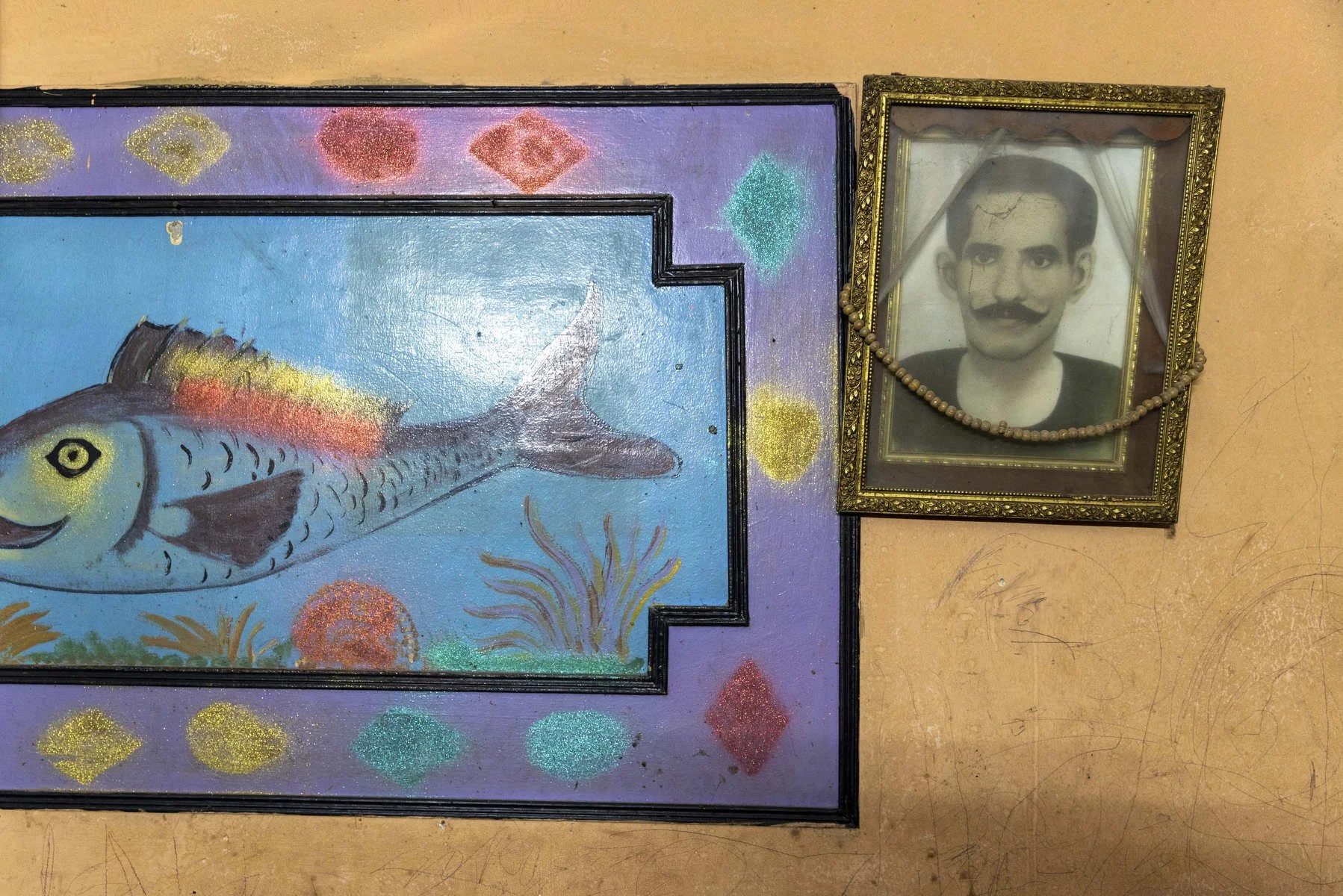
A mural of fish beside a picture of Arafa's father in his house in Qursaya Island in Cairo, Arafa's father passed away at 45 from a disease caused by the Nile’s pollution, Arafa reflects on the death of his father, saying, "My father, uncles, and cousins, none survived past 45 due to the Nile’s pollution, I refuse that fate, I don't want to die young.“
Post-fishing Economy
As fish stocks declined, fishing alone could no longer sustain the community. Where fishermen once caught 20 kilos a day, now even 4 kilos is considered a good haul. However, it no longer is enough to support a family, especially amid rising inflation and economic hardship. Many have turned to alternatives sources of income, such as collecting plastic for recycling. Some clean the Nile after tourist boats or luxury restaurants along the Cairo waterfront, while others have taken jobs as guards for wealthy residents on the island.
Still, for those born into fishing, it’s hard to leave the water behind. The deep connection to the Nile makes it difficult to adapt to other jobs or environments.
One of the new species now being caught is the crawfish, an invasive aquatic species not originally found in the Nile but has spread rapidly, impacting native fish populations. Some fishermen have also found work in media productions and TV shows, as the island’s natural setting in the heart of Cairo makes it a popular filming location.
Nile Crawfish Fishing: From Invasive Species to Livelihood
In the 1980s, Nile crawfish (Procambarus clarkii), originally from Louisiana in the United States, were introduced to Egypt for aquaculture purposes in floating cages near Manial Shiha, south of Cairo. After the project failed, the crustaceans were released into the Nile, where they found ideal conditions to thrive and eventually spread as far south as Upper Egypt.
By the early 2000s, fishermen began complaining about torn nets and reduced fish stocks, caused by the recently introduced invasive species. Government attempts at biological control failed, as they breed up to three times a year, with each female producing about 500 eggs. Nicknamed “Nile cockroach,” the species quickly became a symbol of environmental disruption.
But what began as a threat has now become a vital source of income. On Qursaya Island, fishermen like Arafa consider Nile crawfish fishing a primary occupation, on par with traditional fishing or collecting plastic waste. The catch not only helps reduce the environmental damage caused by the species, giving native fish populations a chance to recover, it also provides tangible economic value. One kilo sells for around 170 EGP (~3.4 USD) to local suppliers before it even reaches Chinese factories for export.
Today, Nile crawfish is no longer just an invasive problem, it’s a local livelihood and a growing export economy.
Arafa collecting crawfish from the traps he had placed in the Nile after collecting plastic waste all night.
Nile Fishing: From Tradition to Adaptation
Arafa checking some of the Joubeya traps he made himself, used for catching both crawfish and regular fish.
During various tours and boat rides around Qursaya with the fishermen, I was introduced to a range of fishing techniques — from traditional net fishing to newer, adapted methods shaped by changing biodiversity and declining fish stocks.
One such method is the Joubeya, a traditional fish trap made of wire mesh. It’s baited and submerged in the Nile, then left for hours or overnight. Fish swim through its narrow opening but can’t escape. Some versions are reinforced to catch invasive species like crawfish, while simpler traps are used for local fish.
Other techniques date back to ancient times, such as stone fishing, believed to originate to Ancient Egypt. Newer methods like Afrita, or “Ghost Fishing”, emerged in response to declining fish populations. In this method, fishermen create artificial underwater shelters by tying together tree branches. Over time, fish gather beneath them, and the branches are eventually retrieved along with the fish they attract.
While many blame pollution and biodiversity shifts for the drop in fish stocks, one of the island’s earliest fishermen told me that in the past, some fishermen even used electric shocks in the water to maximize their catch. Although currently banned, this harmful practice further damaged fish populations in the Nile.
During a workshop with researcher Saker El Nour, held as part of the preparations for the Nile Parade, he asked the fishermen: “What’s your most memorable moment on the Nile?” Almost all of them began sharing stories about the biggest fish they ever caught. This sparked a conversation about the different types of fish still found in the Nile today, at a time when fish stocks have noticeably declined, and many species that were once common have now disappeared.
Later, I asked Arafa, my friend and a fisherman from the island, if one day he could bring all the fish he caught so we could photograph them in a studio setting and learn more about each species through his voice.
Qursaya Studio
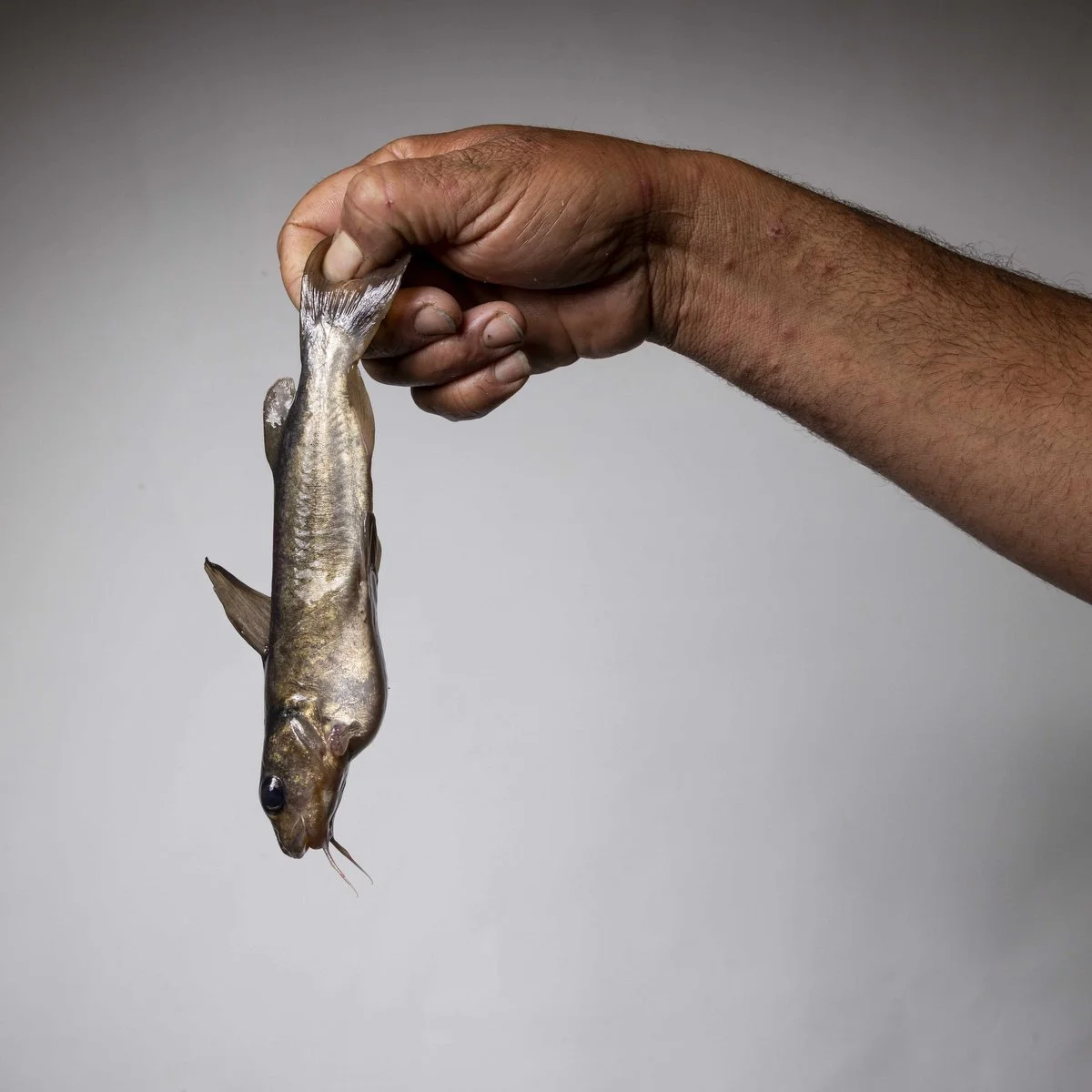
Chrysichthys auratus, known to fishermen as "zaazou" or "abo reiala."
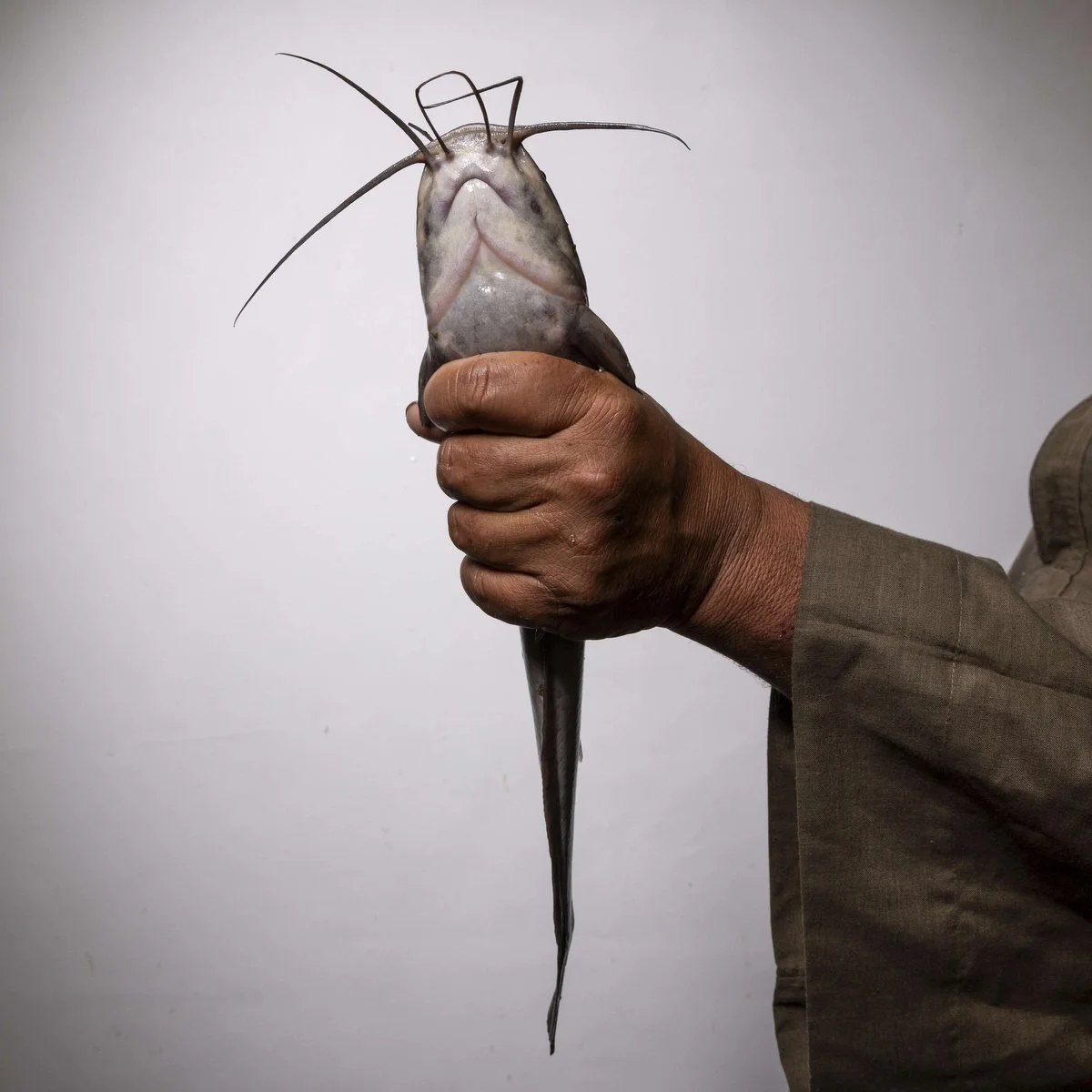
Clarias gariepinus, the most common catfish species around Qursaya island
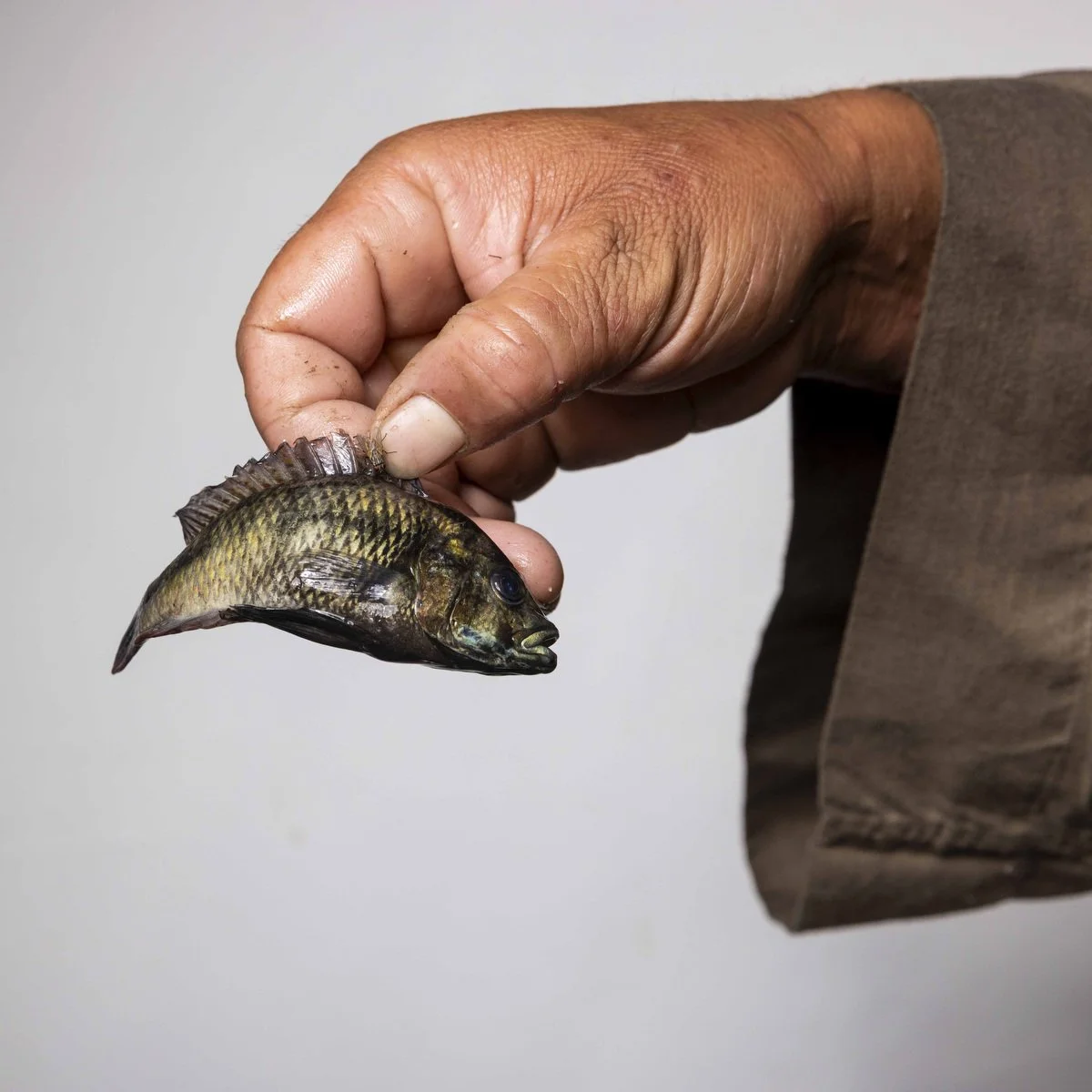
"Goroud" or "abu sawada" (scientific name not confirmed), a small fish, possibly a type of Tilapia, found year-round in the Nile. It doesn’t grow much bigger.
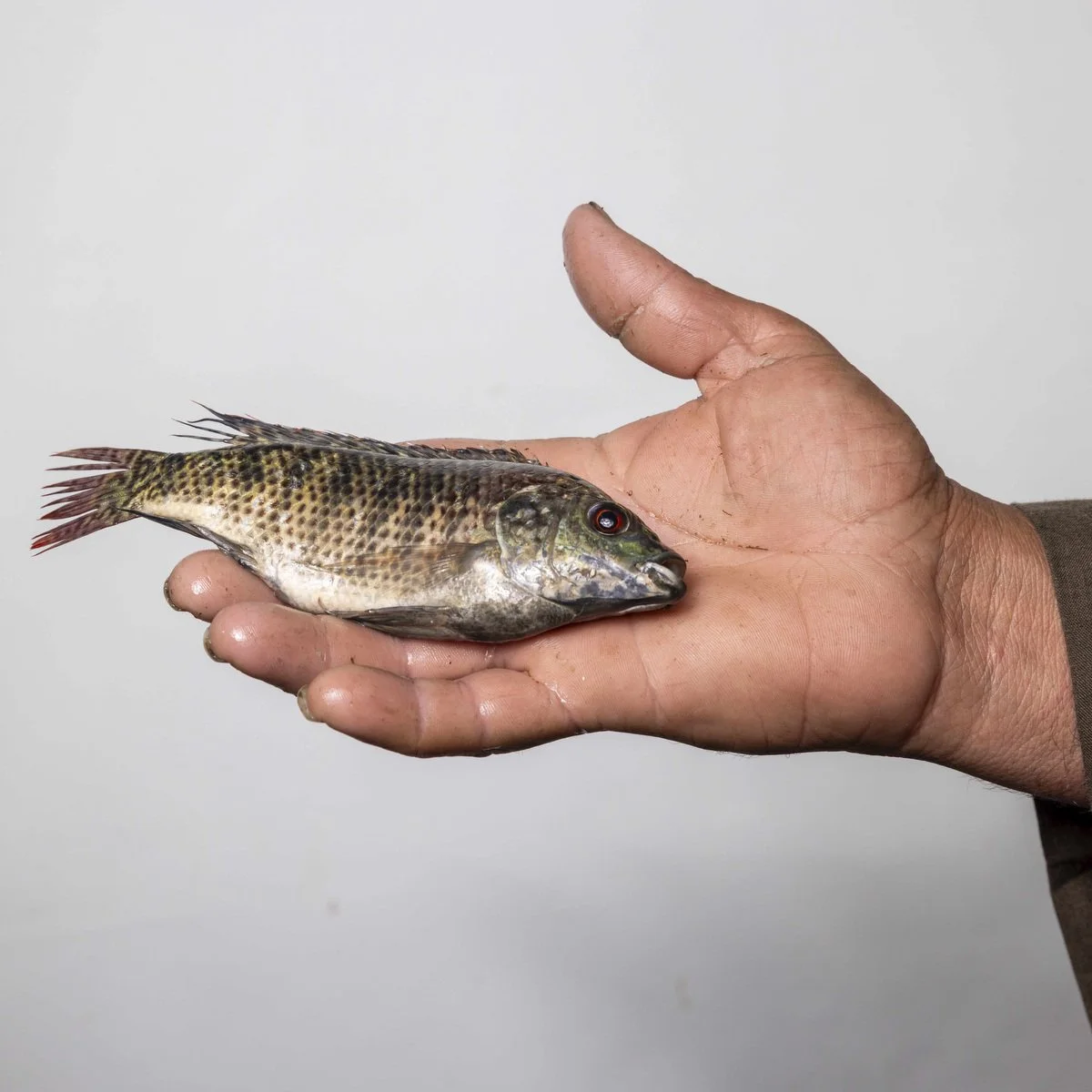
Oreochromis aureus, a native type of tilapia

“fatat,” “hindi,” or “sultani” (scientific name not confirmed), likely a type of Tilapia.
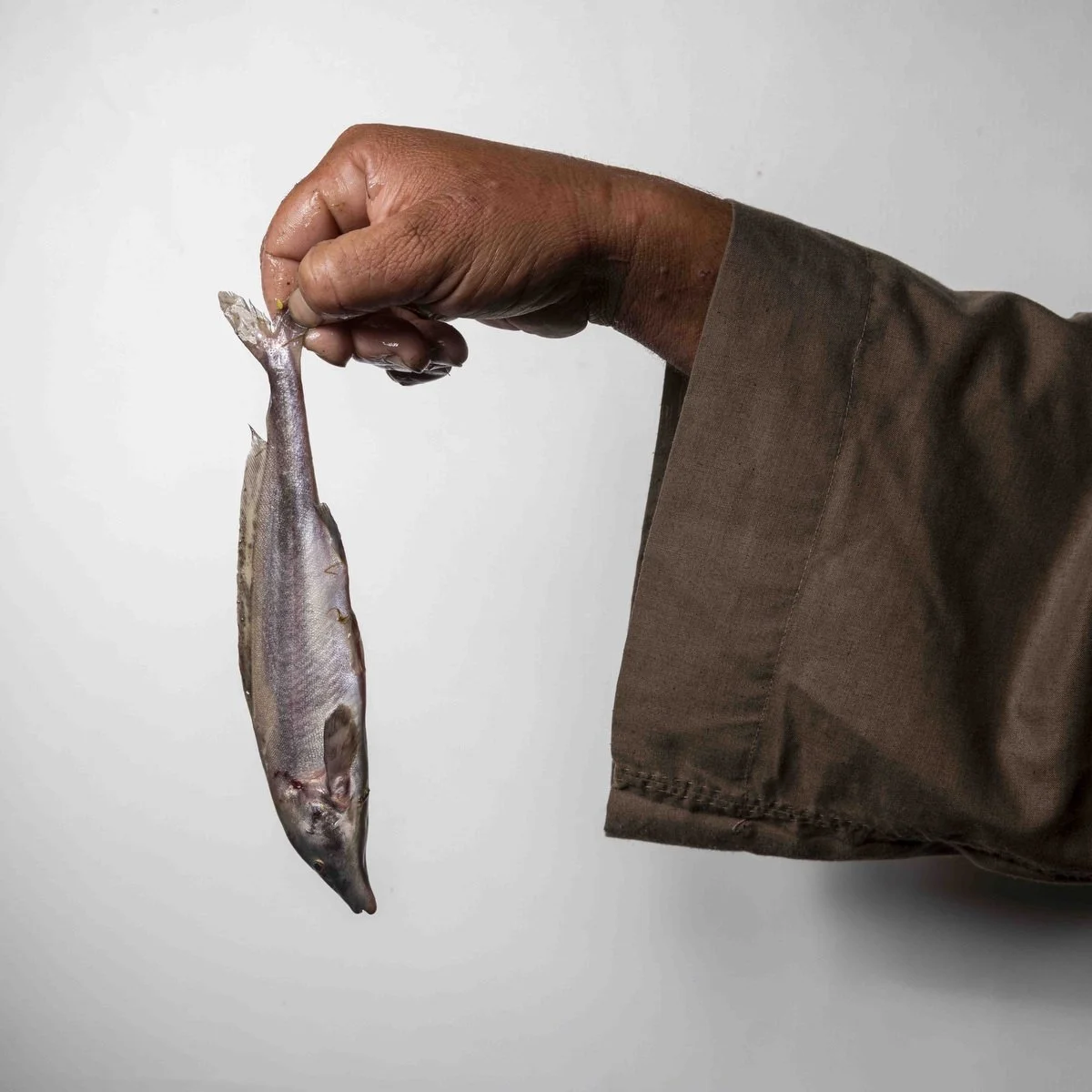
Mormyrus kannume, locally called “annuma”, a fish disliked by many fishermen despite its sweet-tasting meat
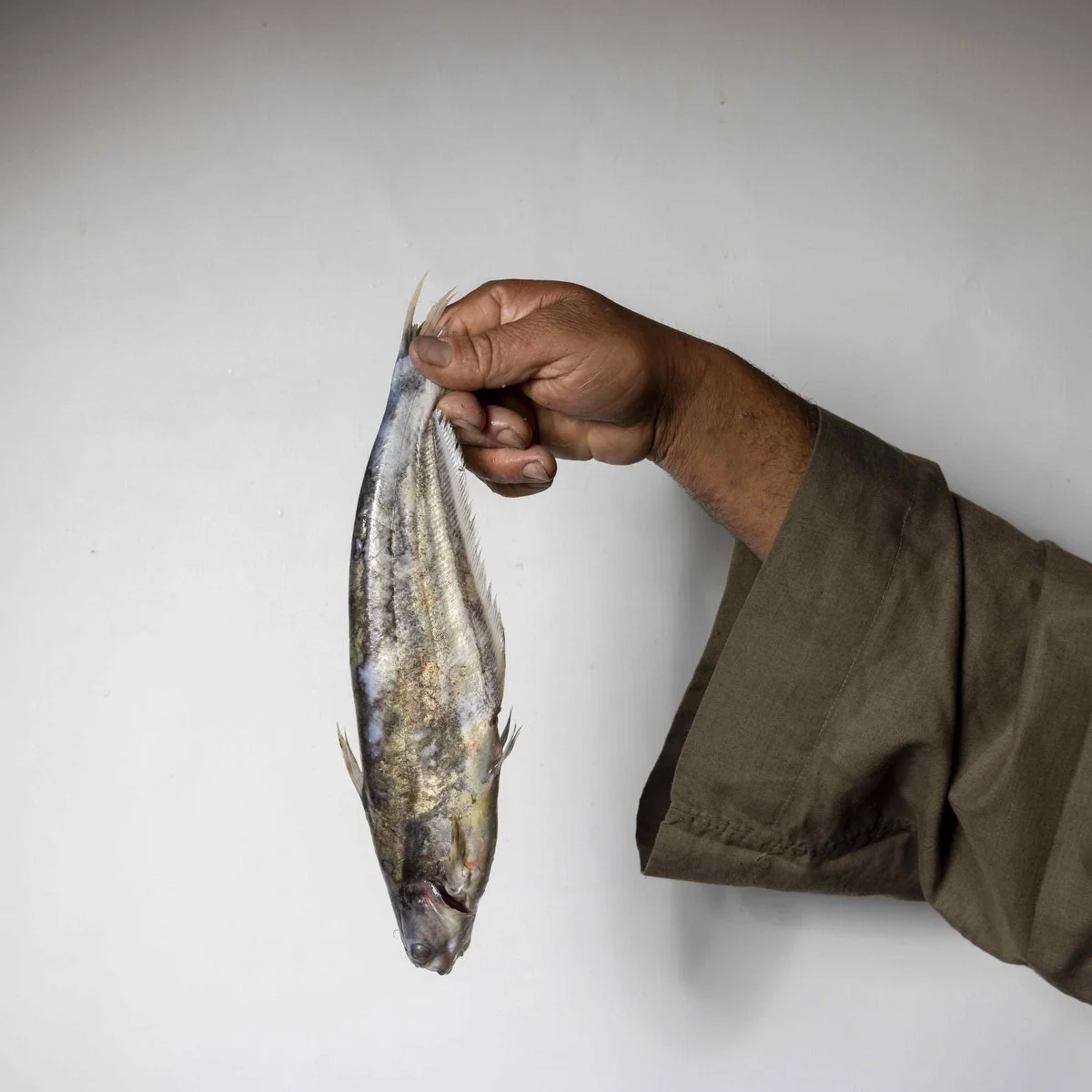
Schilbe is a type of catfish that fishermen consider one of the fruits of the Nile. They often keep it for themselves rather than selling it at the market.
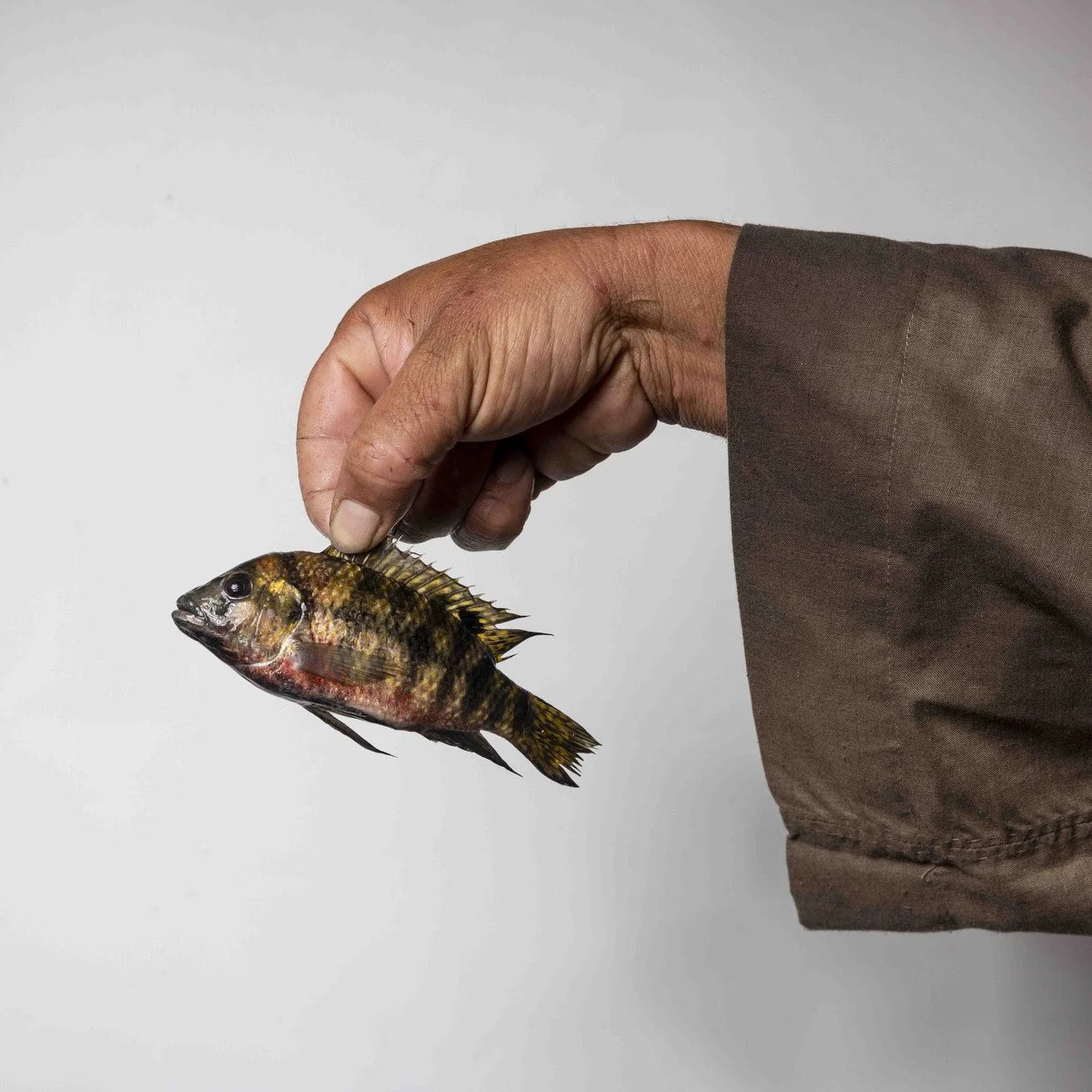
Coptodon zillii, known as "hagari," and commonly found hiding among rocks, according to local fishermen.
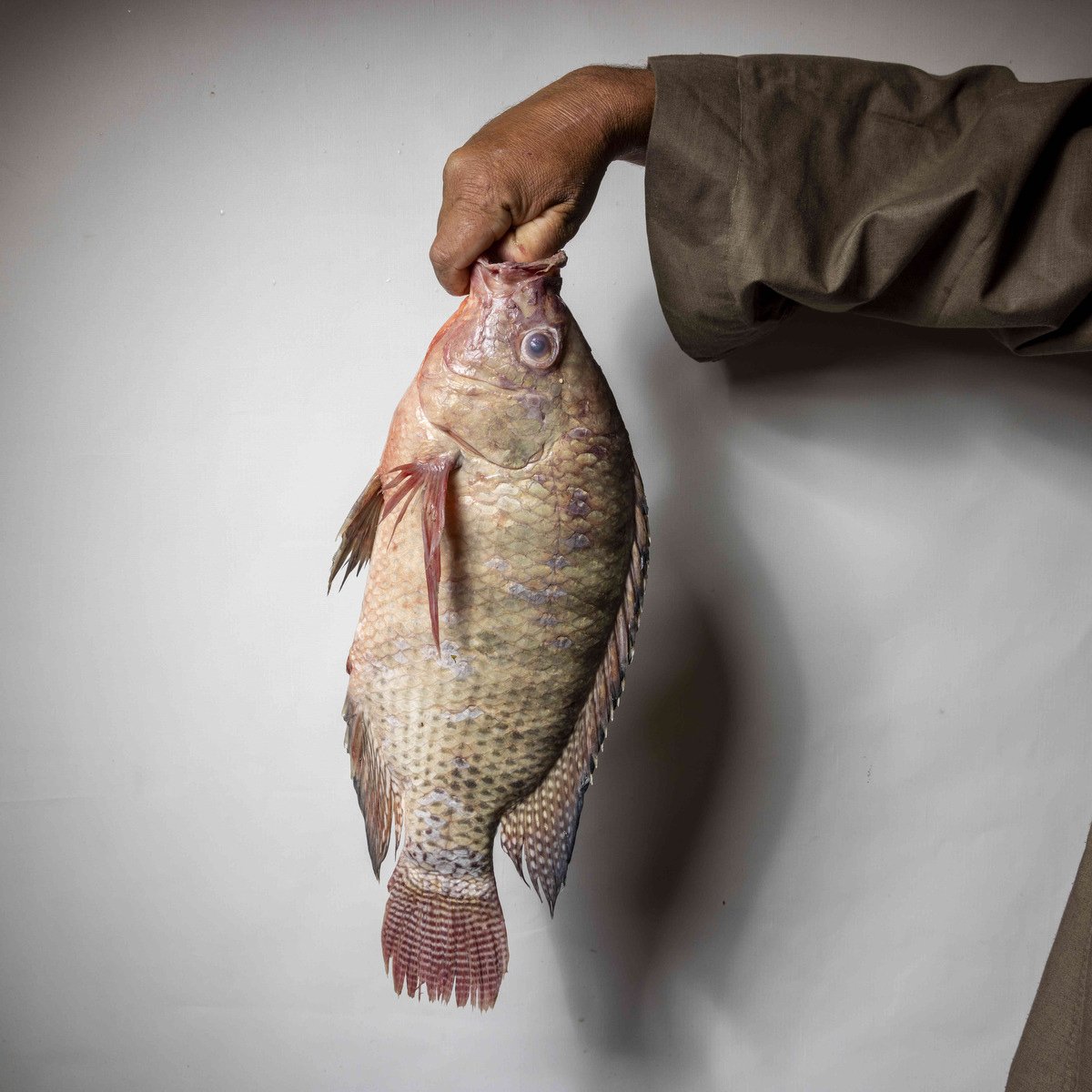
Nile tilapia, locally called abo hamar as an adult. Its numbers increase in summer
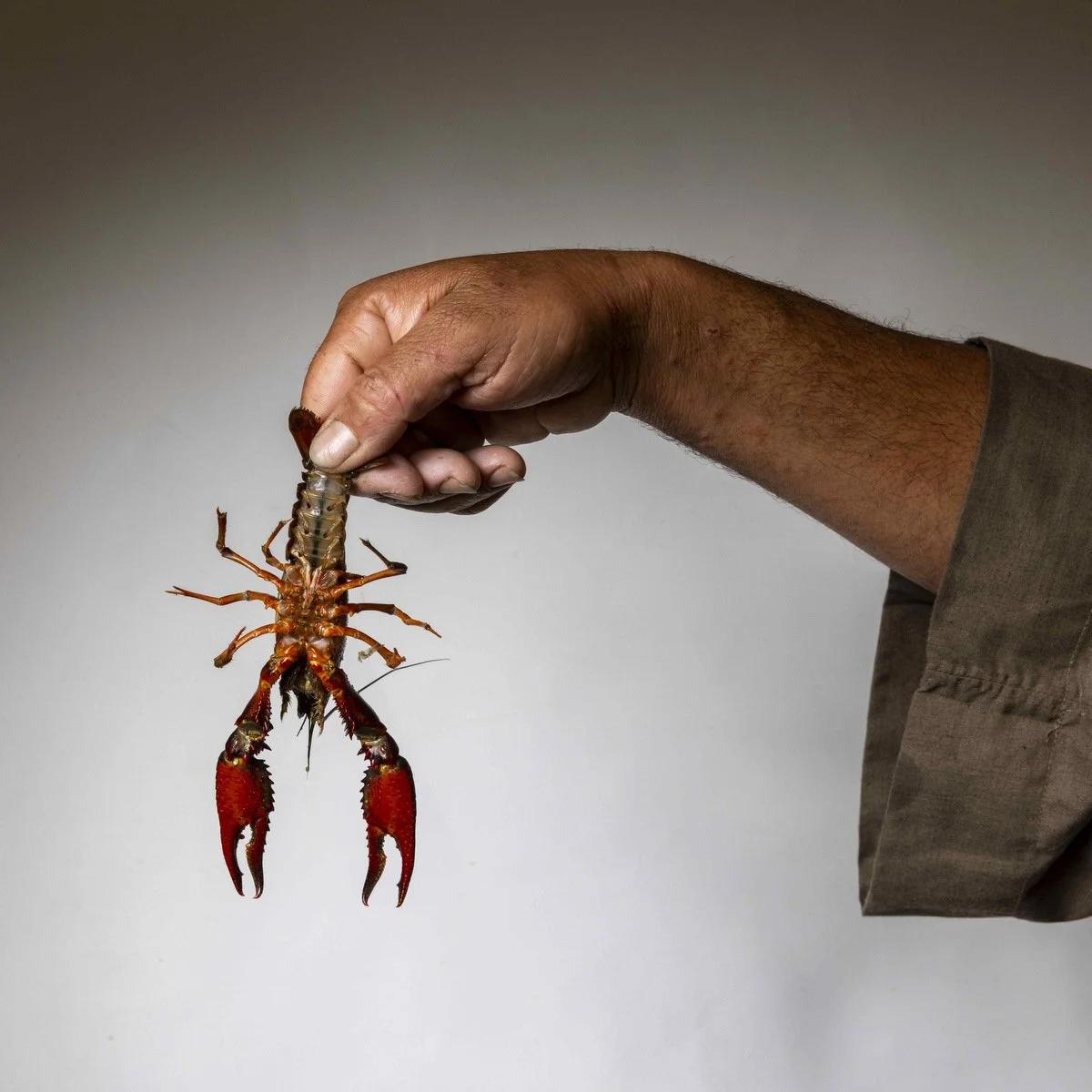
Procambarus clarkii, known as Nile Crawfish, an invasive species turned important livelihood for Egyptian fishermen
On and Around the Water's Surface
My friendship with Arafa began during a long night ride in his boat as he collected plastic waste from the Nile. We started at midnight and continued until early morning, surrounded by silence, listening only to the sounds of the riverbanks and the gentle movements of his oars through the water. That night turned into many others – shared boat rides and conversations.
During one ride at sunset to collect water samples around the island, what began as a simple task turned into an unexpected masterclass in river ecology. As we floated along, Arafa shared story after story, pointing out native and invasive species, explaining fishing techniques, and recalling the species that had disappeared. His deep knowledge, built from a lifetime on the Nile, was as valuable as formal research.
Together with researcher Moustafa Eltoukhy, we began documenting everything Arafa showed us species on the water’s surface and along the riverbanks. We brought them to our mobile studio to photograph and identify them one by one, creating a growing record shaped by both science and lived experience.
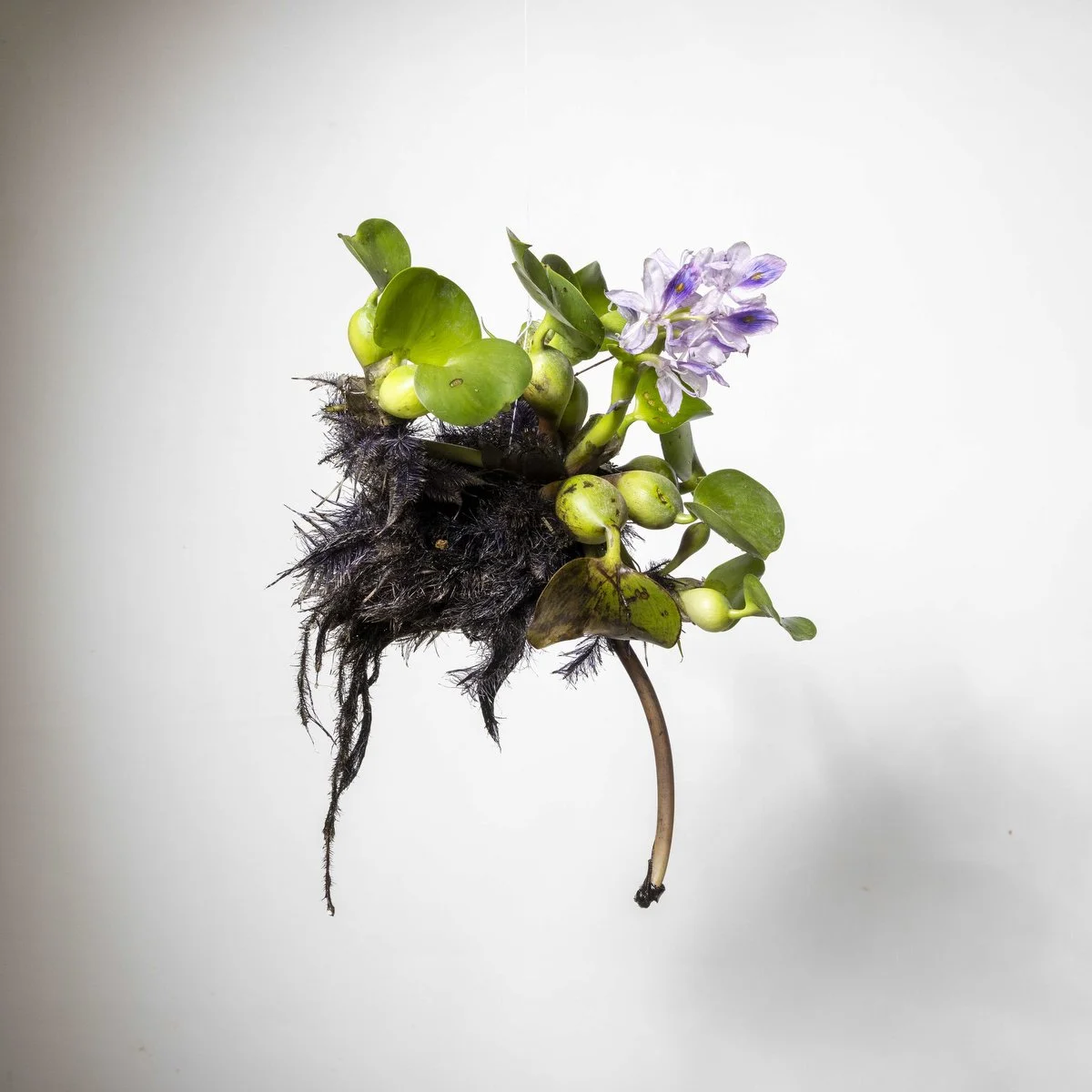
Water Hyacinth, originally from South America, and introduced to Egypt as an ornamental plant. It spread into the Nile, where it multiplies rapidly, clogs waterways, and displaces native species.
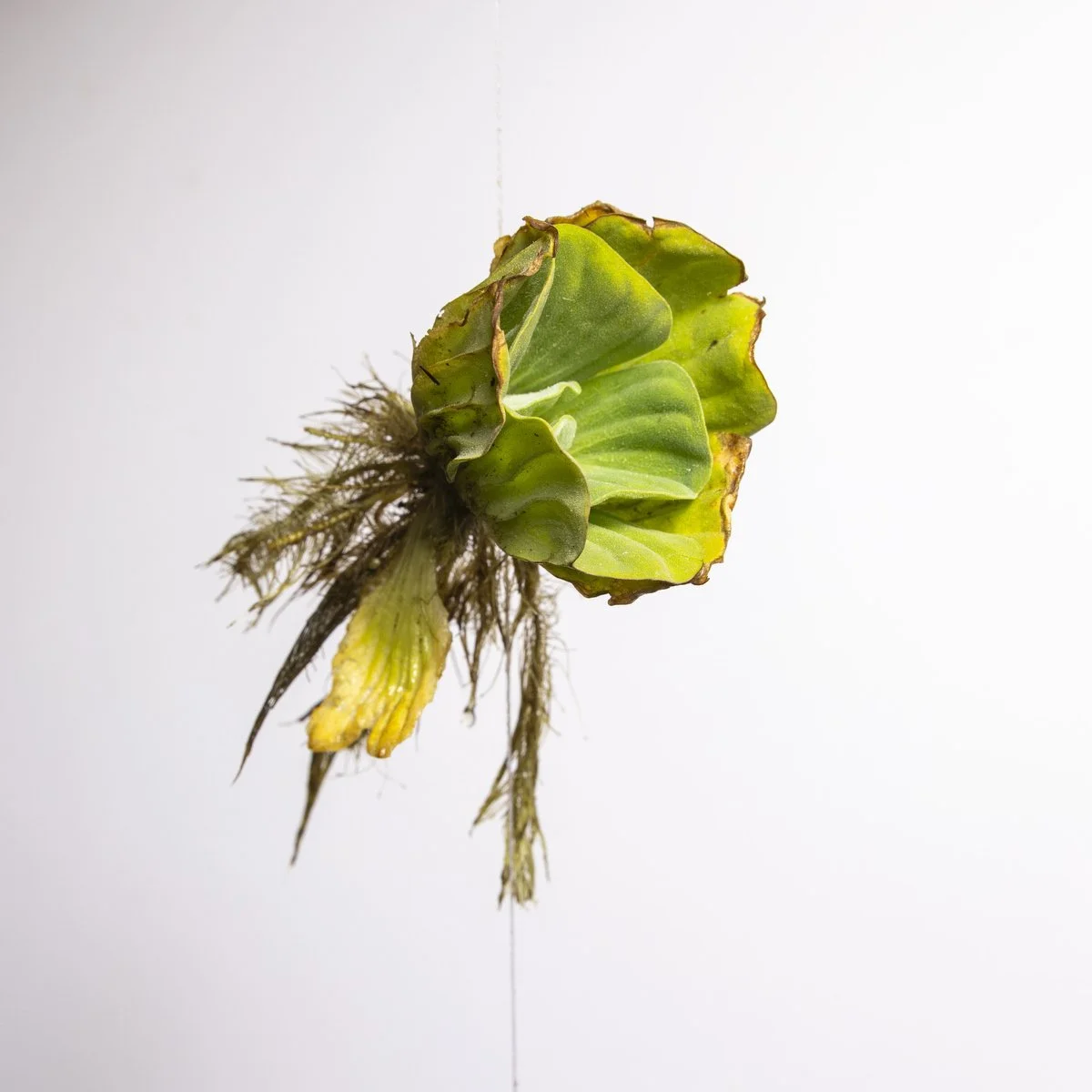
Pistia stratiotes, or water lettuce, is a floating invasive plant that forms dense mats that block water flow and harm aquatic ecosystems.
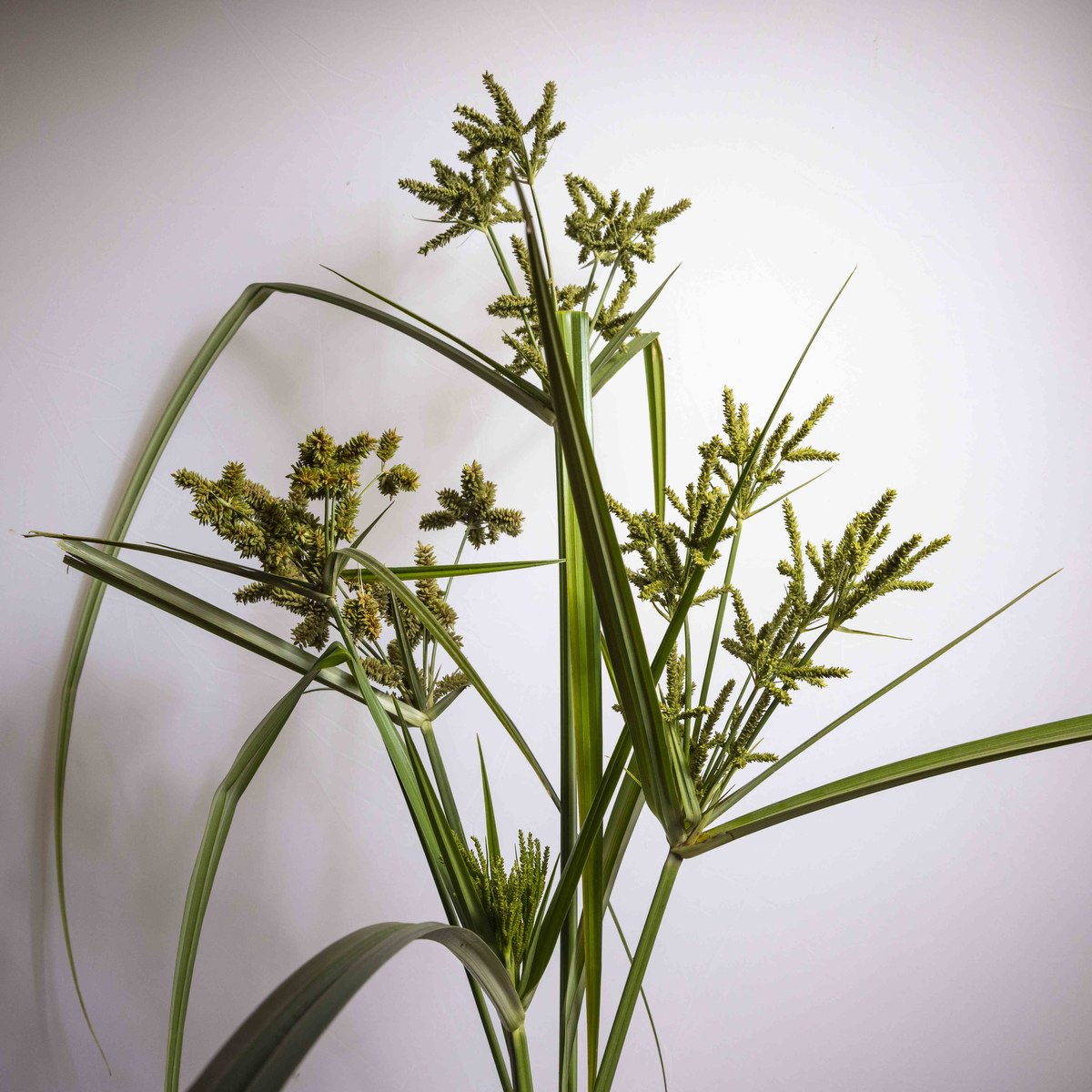
Cyperus alopecuroides, a common perennial sedge on the island, growing in patches up to 1.5 meters tall.

Potamogeton, attracting large fishes which makes it a favoured spot for bigger fish traps.
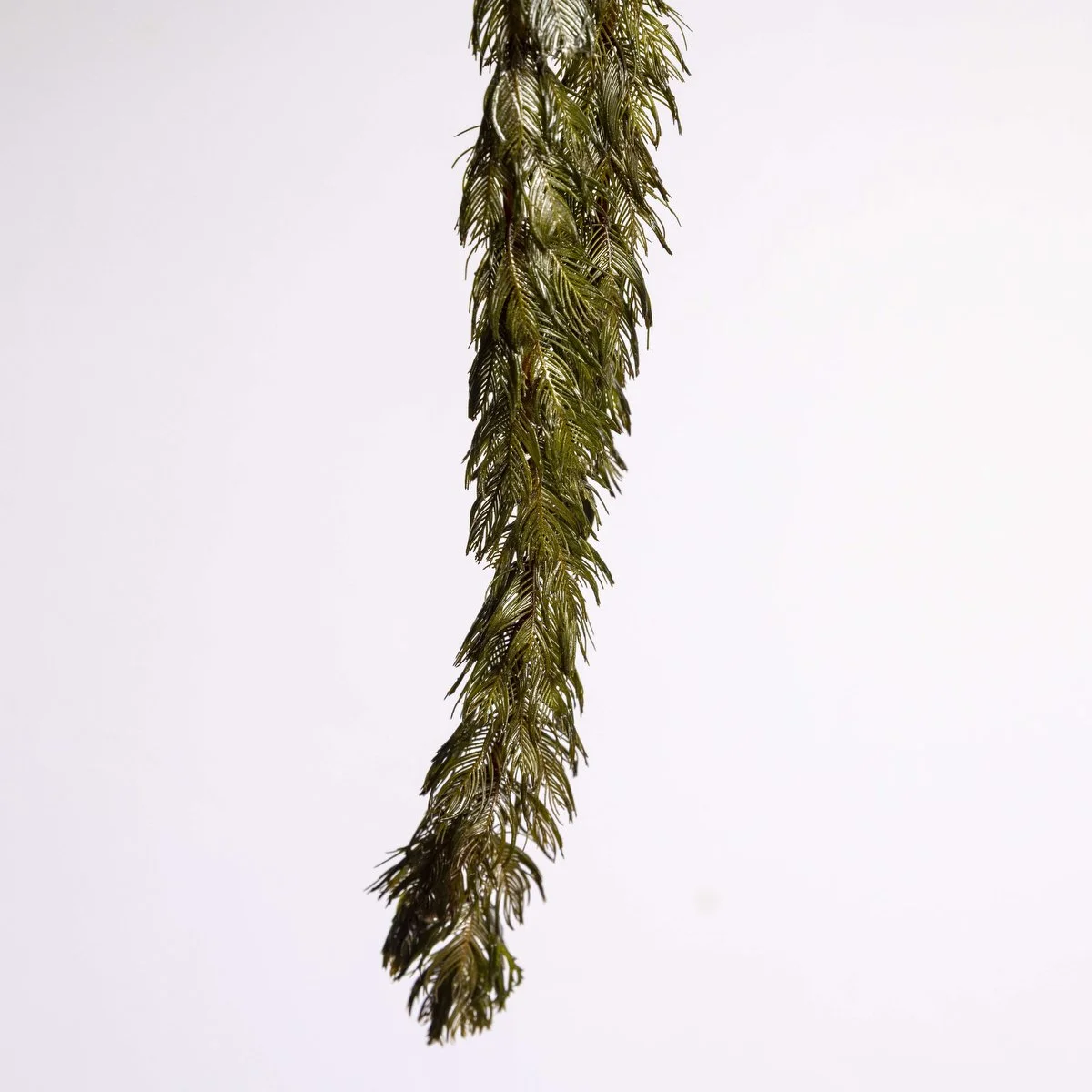
Myriophyllum spicatum is a submerged plant in slow water that shelters fish without clinging in fishermen’s nets.
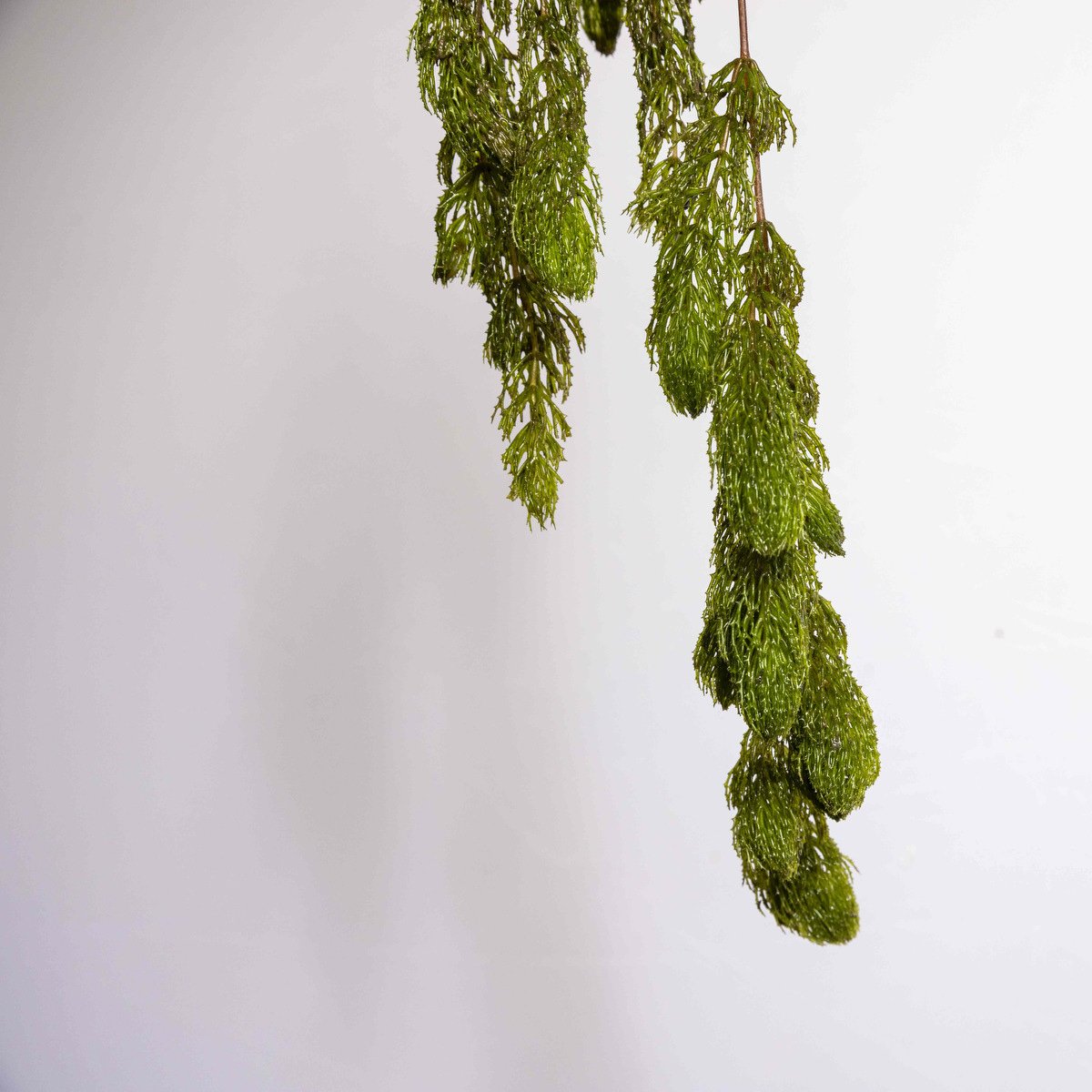
Ceratophyllum demersum is a submerged plant that slows water flow, retains warmth, and oxygenates the water.
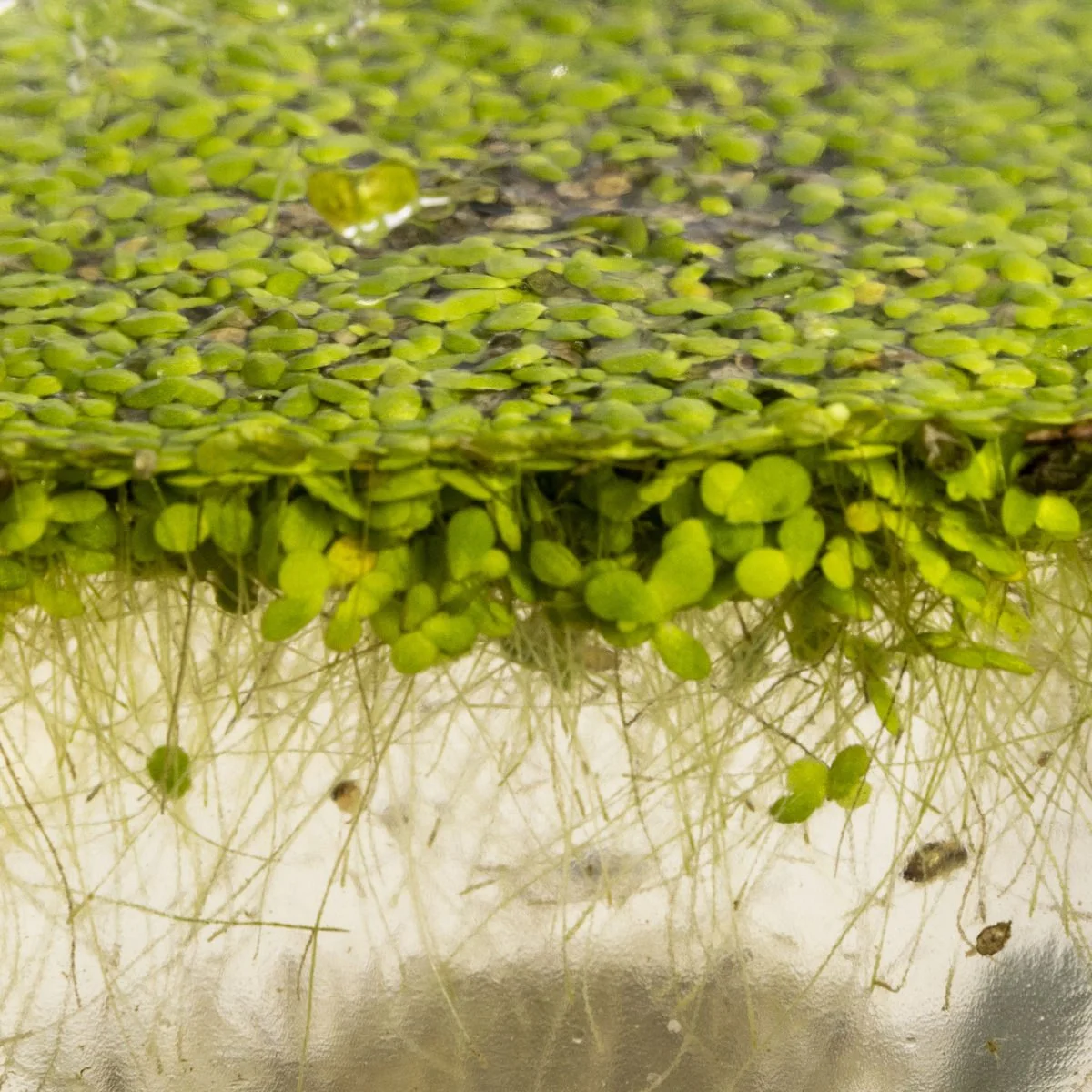
Lemna sp is a small native floating plant found in stagnant pools. Known as duckweed, it multiplies rapidly and is an important food source and nutritious animal feed
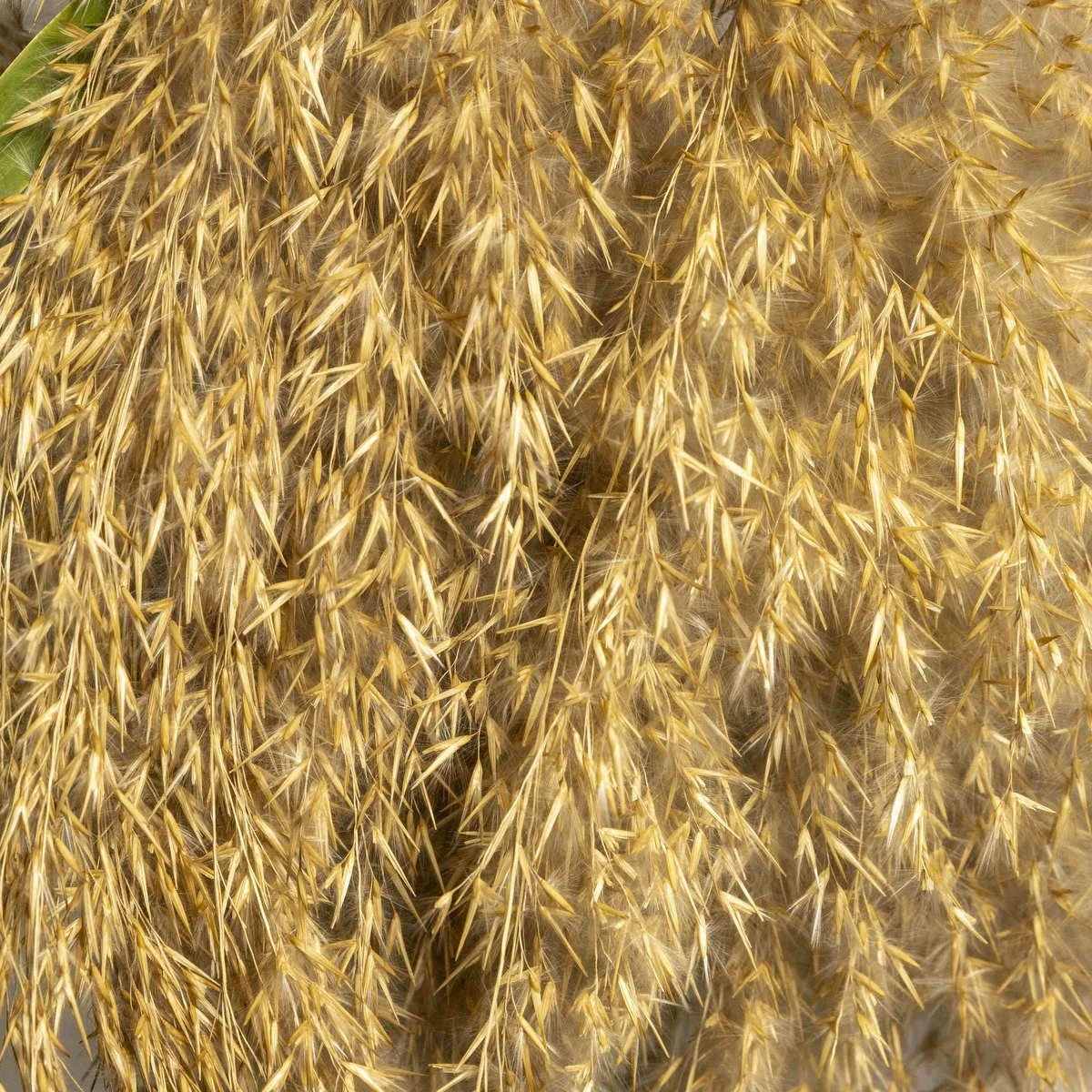
Phragmites australis is a tall reed that grows along the riverbanks near the island. It spreads quickly by wind and often takes over areas, especially where the land has been disturbed
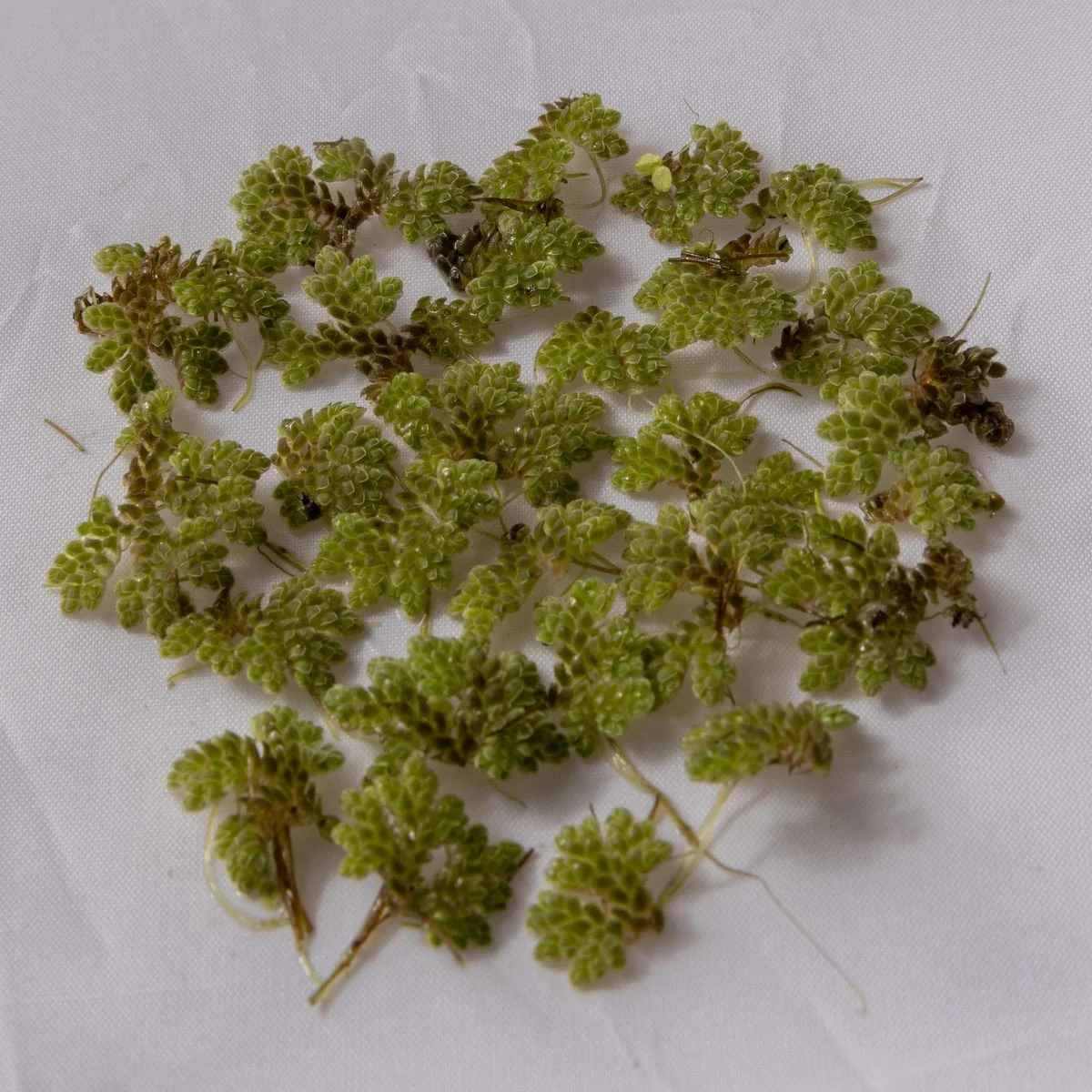
Azolla sp. introduced to Qursaya by an investor who created shallow cultivation pools. Used as nutrient-rich cattle feed but linked to higher mosquito populations on the island
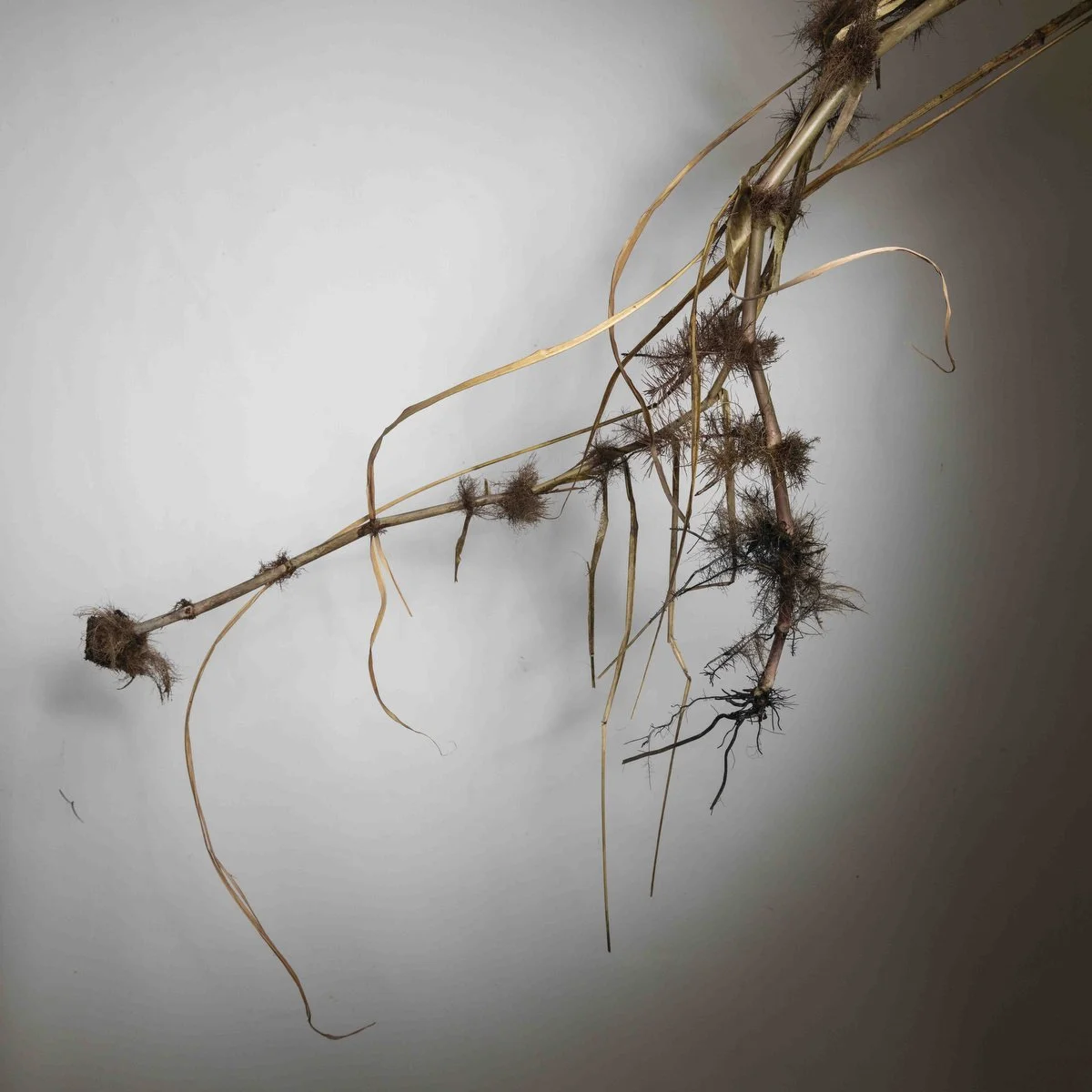
Saccharum spontaneum, or 'Wild Sugar Cane,' is used by fishermen in "Ghost Fishing"
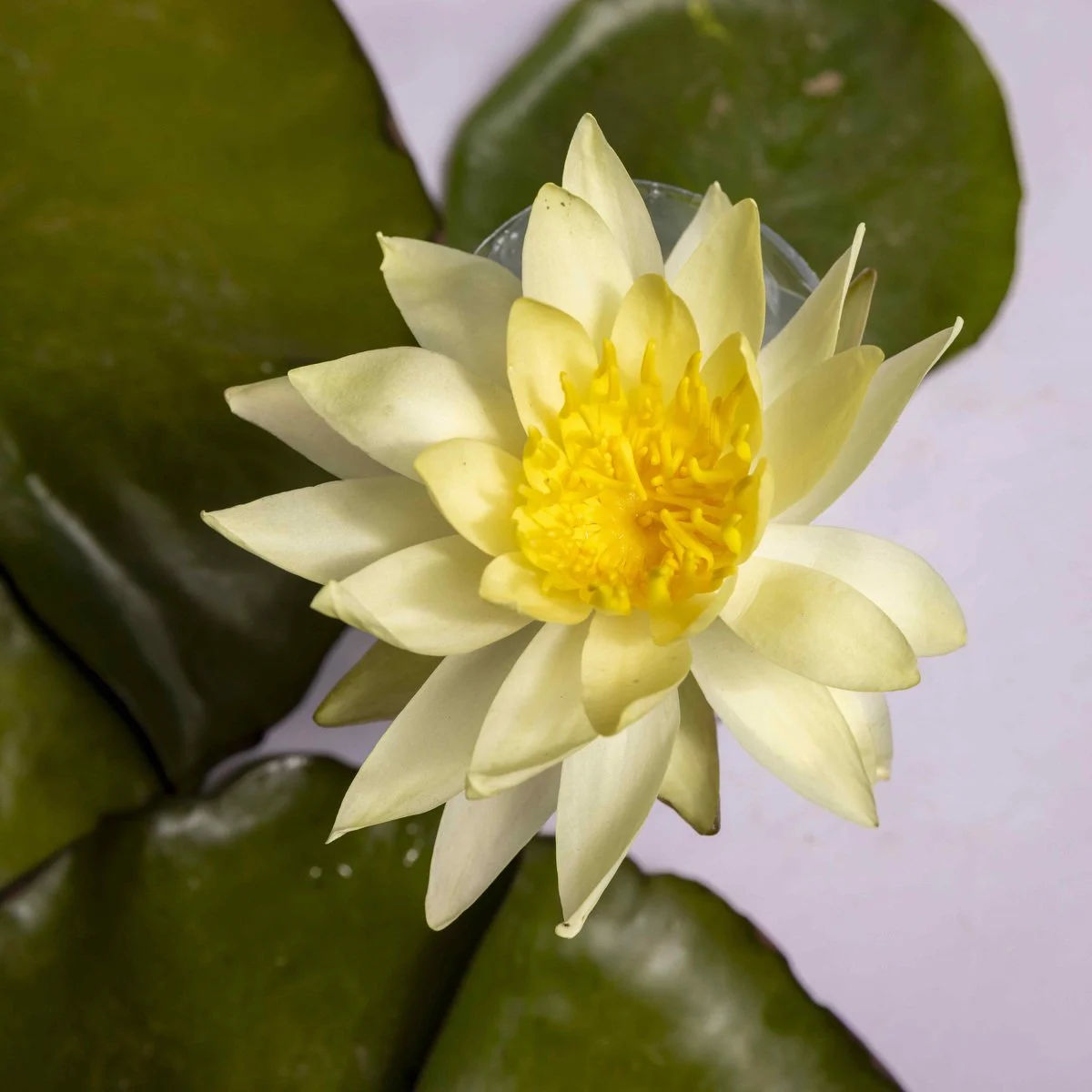
Yellow Lotus or Water Lily, a native to the Americas, introduced to Qursaya as an ornamental plant. It has smaller, denser floating leaves than the blue water lily.
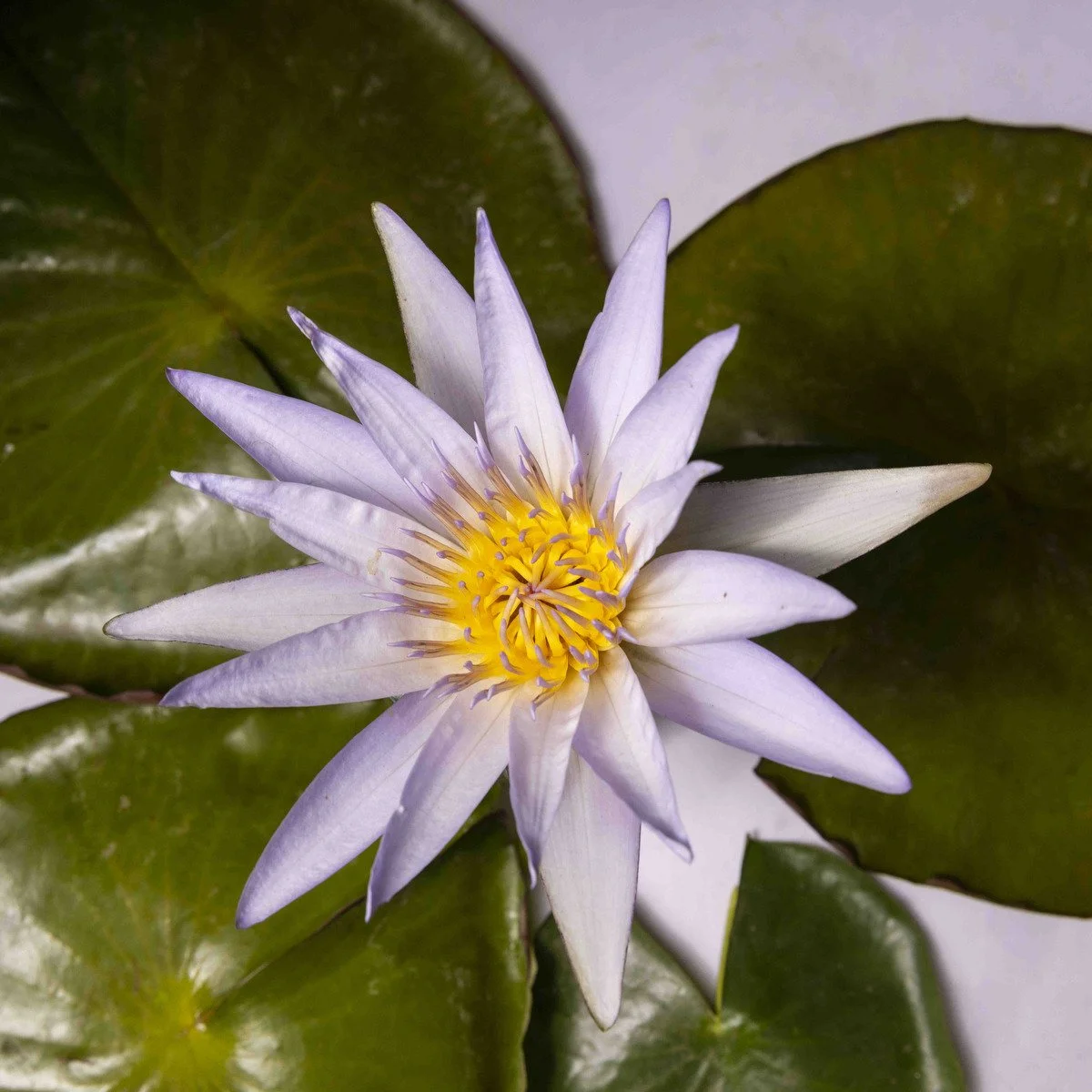
Blue Lotus flower or Water Lily, a symbol of ancient Egypt, nearly extinct but reintroduced to the island. Its blue flower opens at sunrise and closes at noon.
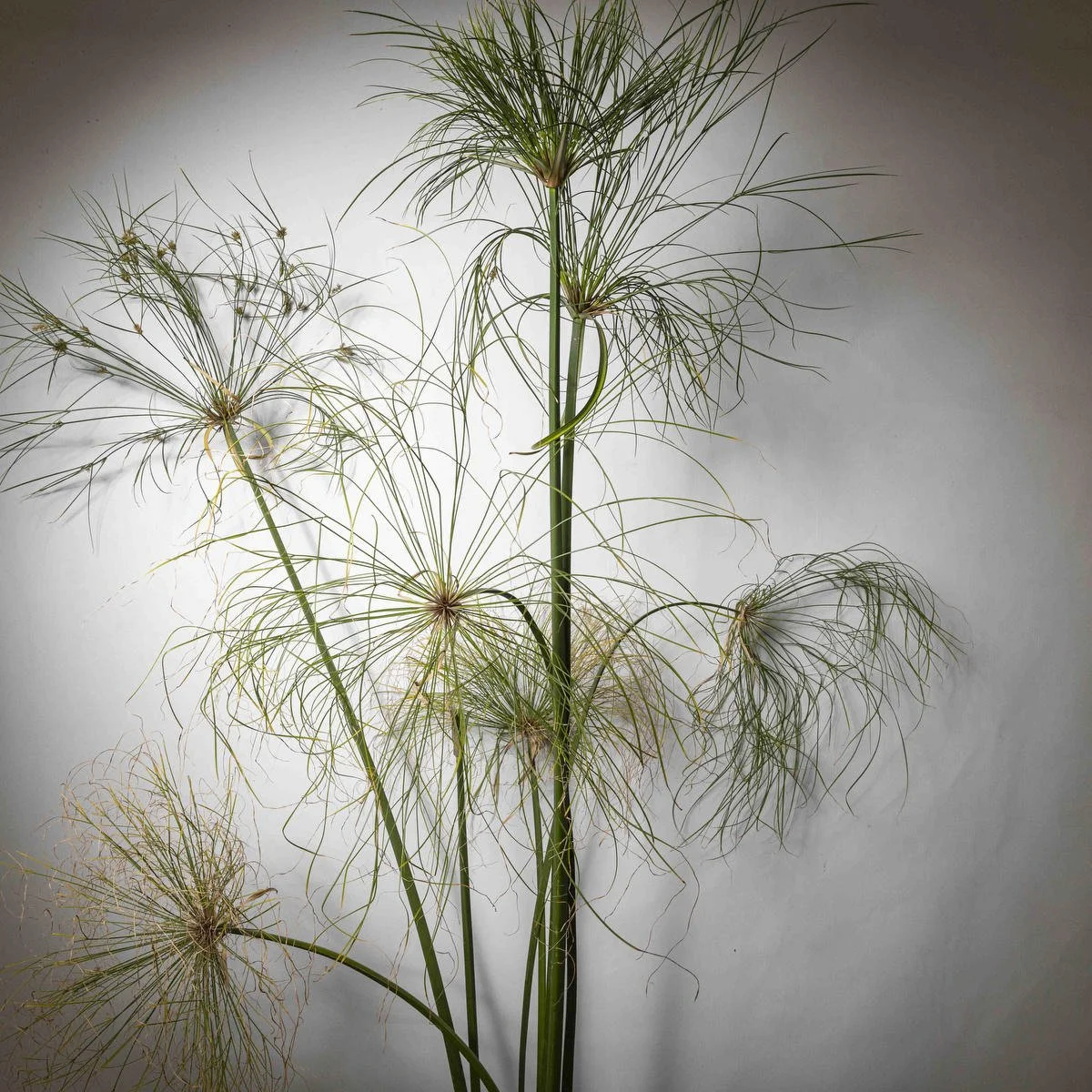
Cyperus papyrus is an ancient Egyptian plant reintroduced to Qursaya in the 1980s. It improves water quality, provides fish shelter, and its fragrant plant stems are used in perfumes.
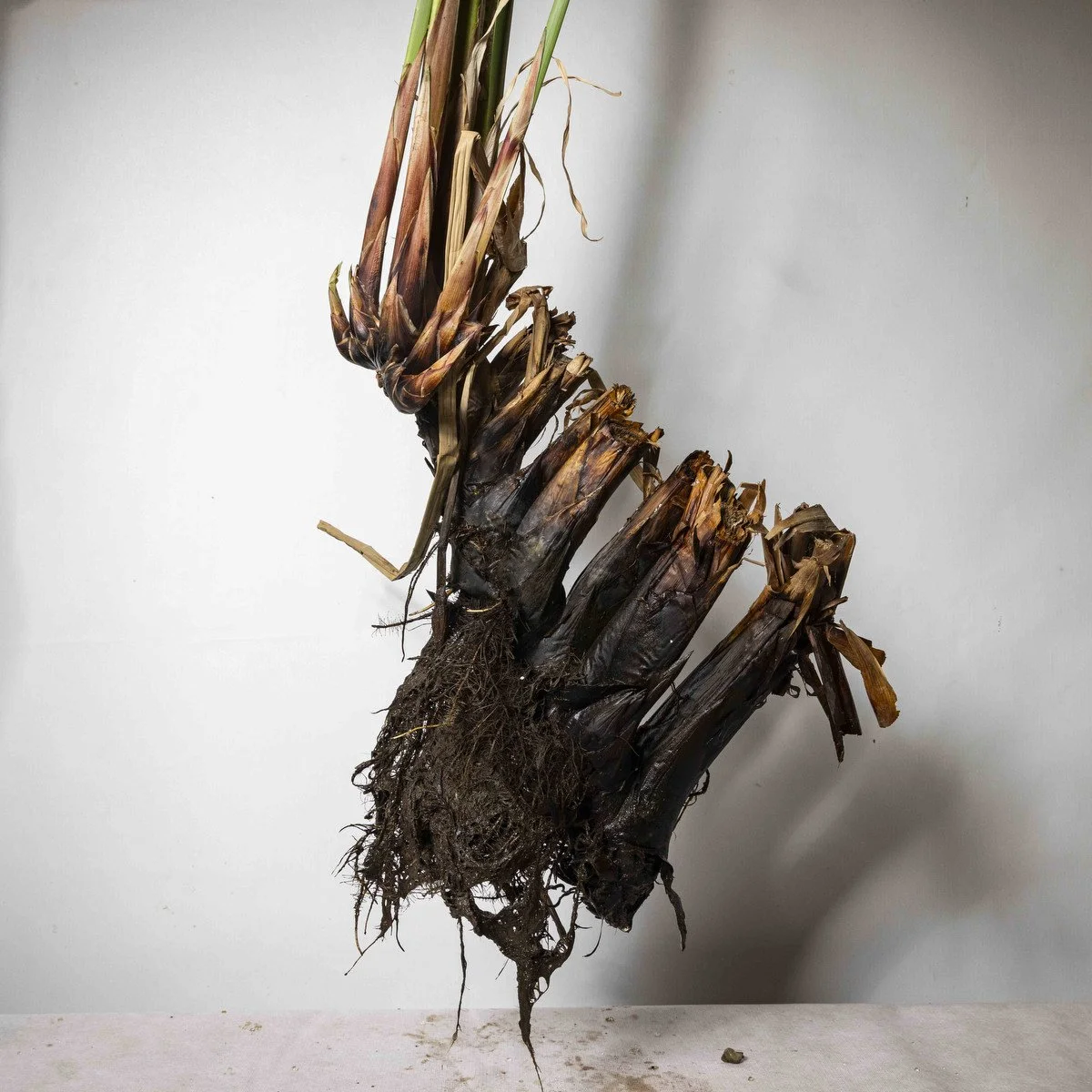
Roots of Cyperus papyrus, an ancient Egyptian plant reintroduced to Qursaya in the 1980s.
Beyond the water surface
Agar test, done in Delft in 2025, for one water sample, it is a laboratory method used in microbiology to grow and identify microorganisms, especially bacteria and fungi.
Driven by a passion to understand what a single drop of water could reveal – how drops differ, what invisible life they hold, and what defines water quality – I worked closely with water researchers and microbiologists to conduct simple analytical tests, both in the field and the lab.
We carried out a preliminary water sampling campaign around Qursaya Island, collecting samples at various points along the Nile. Results showed some areas were heavily polluted, others had unusual colors or silt, while samples from the river’s center appeared cleaner.
Tests suggested pollution likely caused by poor sanitation, household waste disposal, littering, and lack of waste management on the island. These findings highlight the need for a more detailed, seasonal study to fully understand the water quality.
Seven water samples were collected during the tour around the island and included:
Sewage water flowing from Qursaya into the Nile
Algae near the Pharaonic Village
More concentrated algae in the same area
Water near the treatment plant facing the island
Water from the heart of the Nile
Polluted surface water at the tip of Qursaya
Polluted water in front of the VeryNile facility

Water samples seen by a light microscope
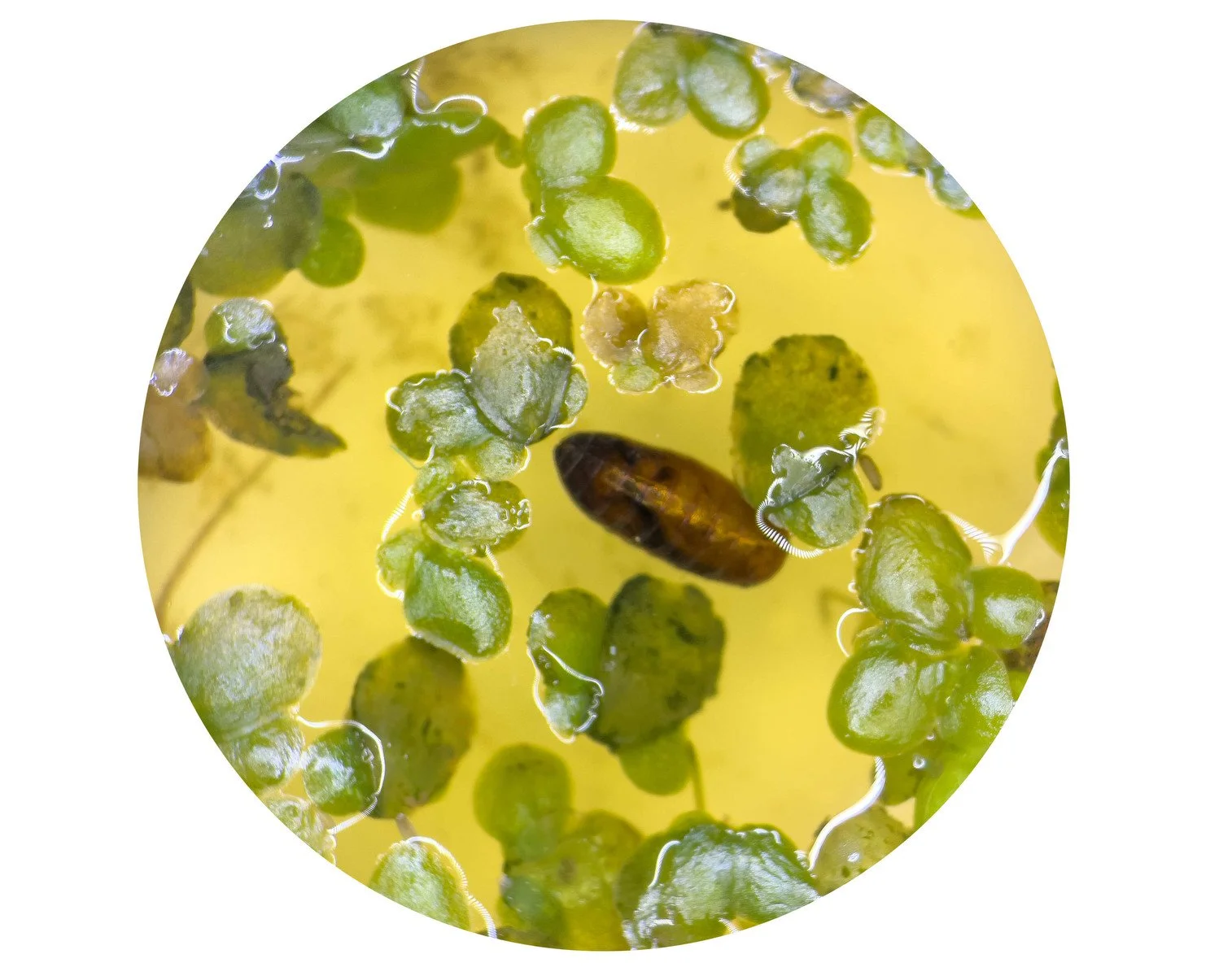
Water samples seen by a light microscope
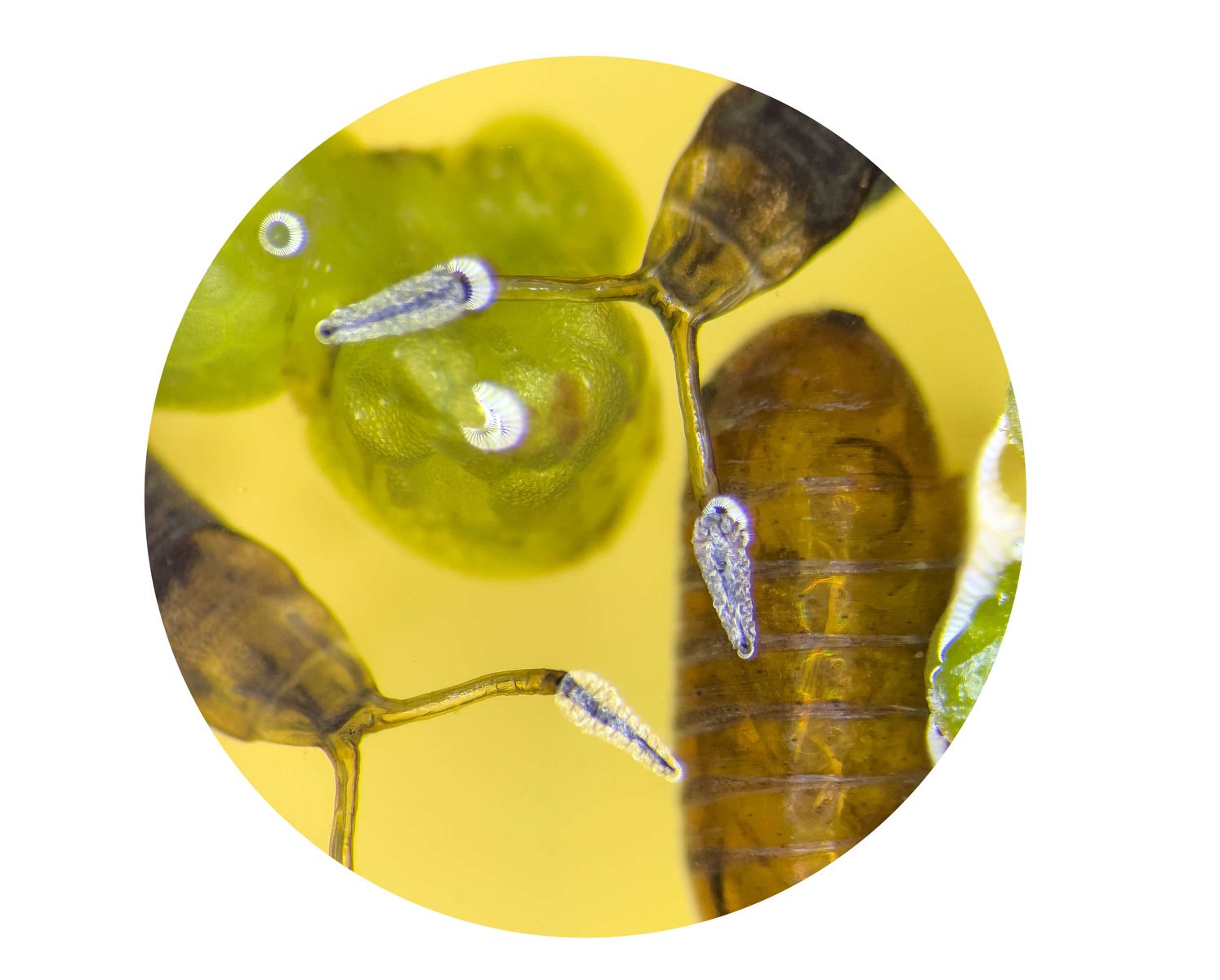
Water samples seen by a light microscope
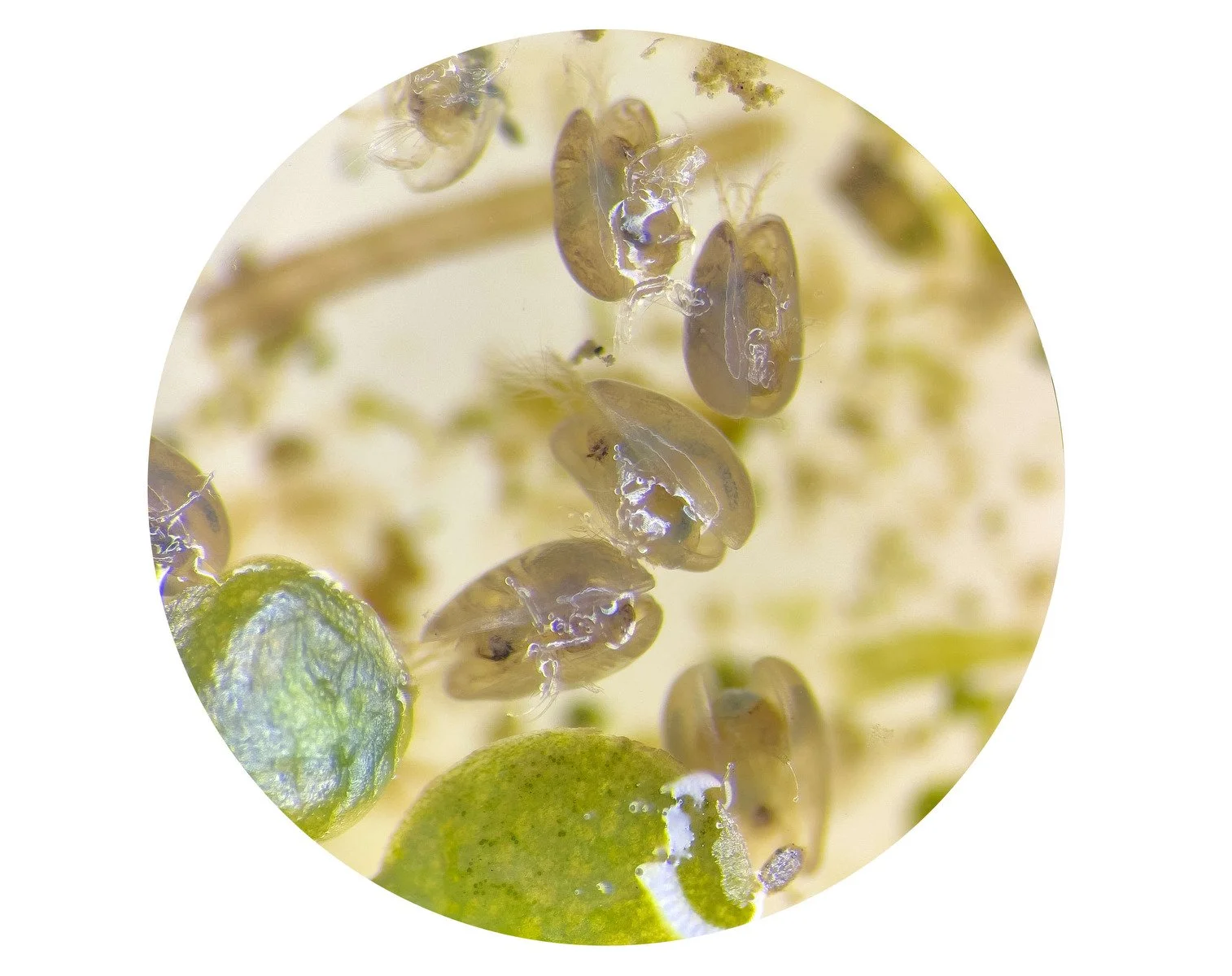
Water samples seen by a light microscope
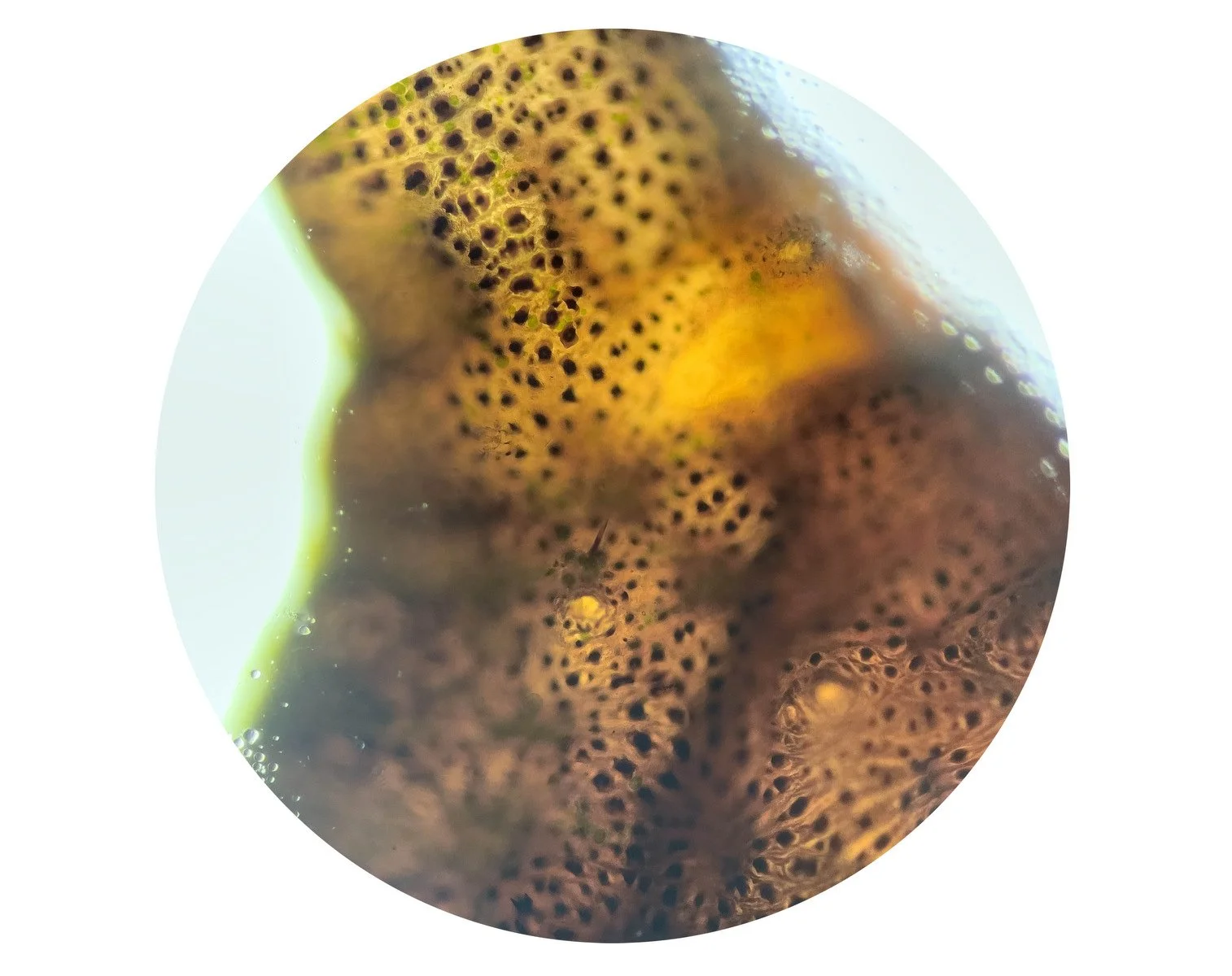
Water samples seen by a light microscope
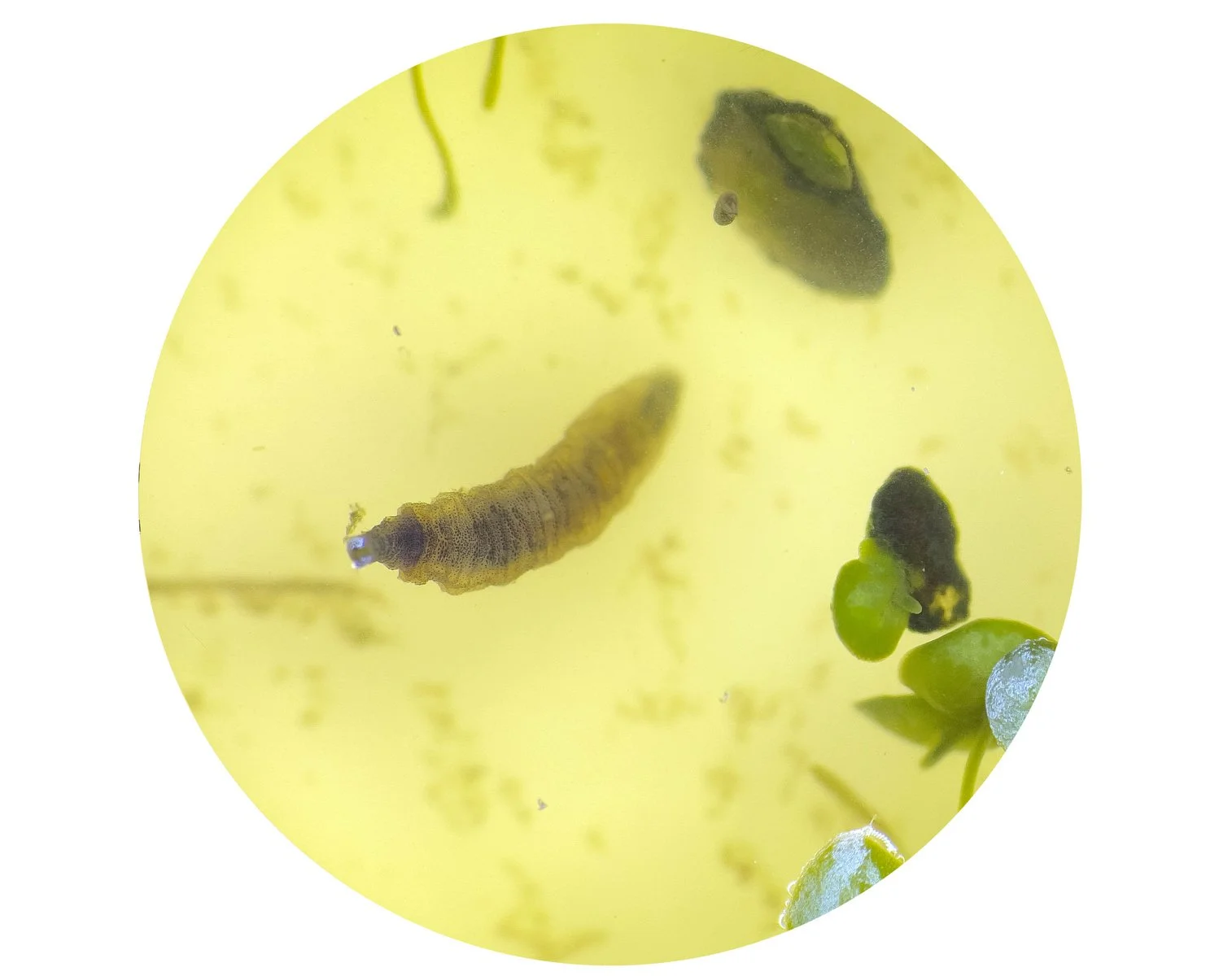
Water samples seen by a light microscope

Water samples seen by a light microscope
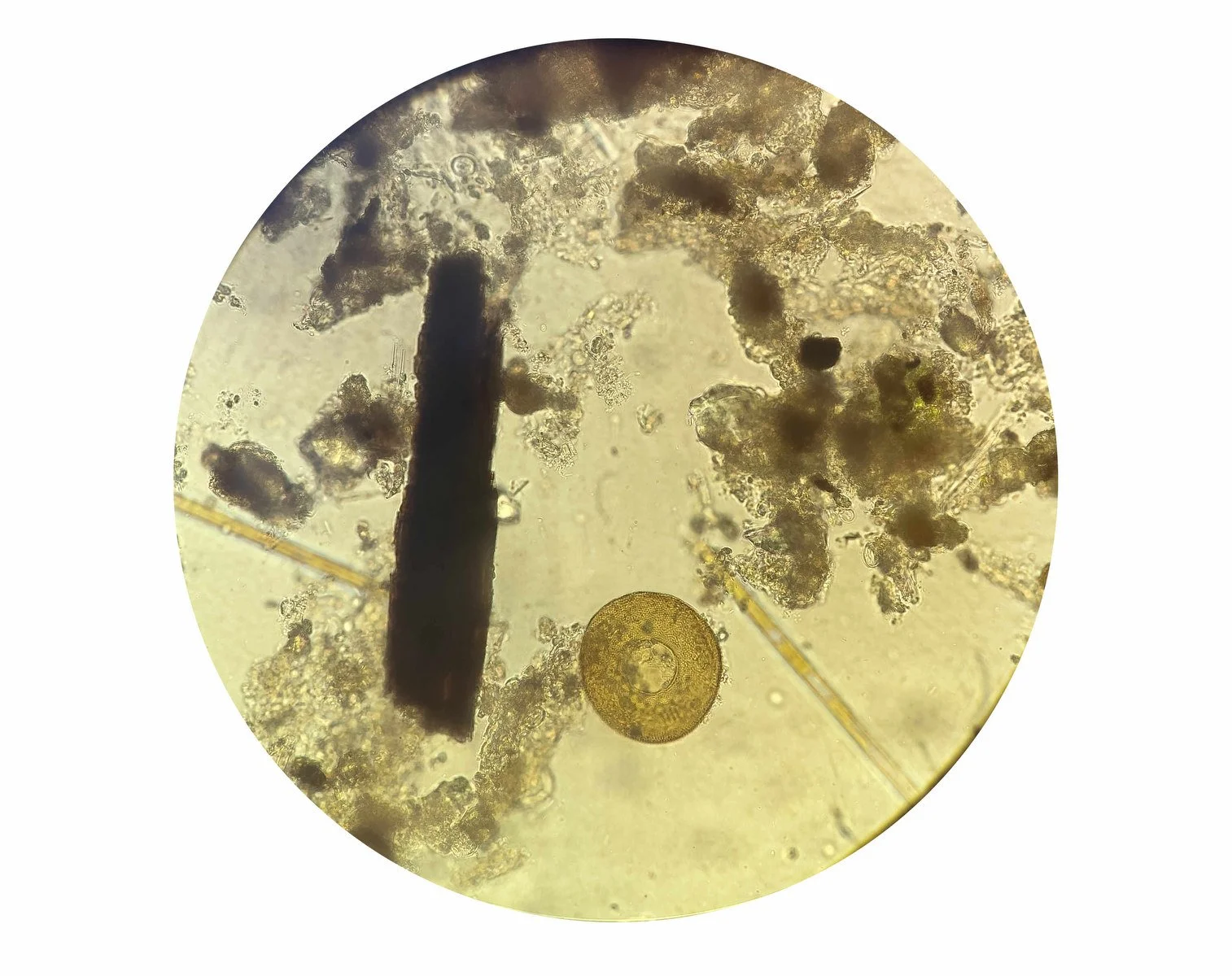
Water samples seen by a light microscope
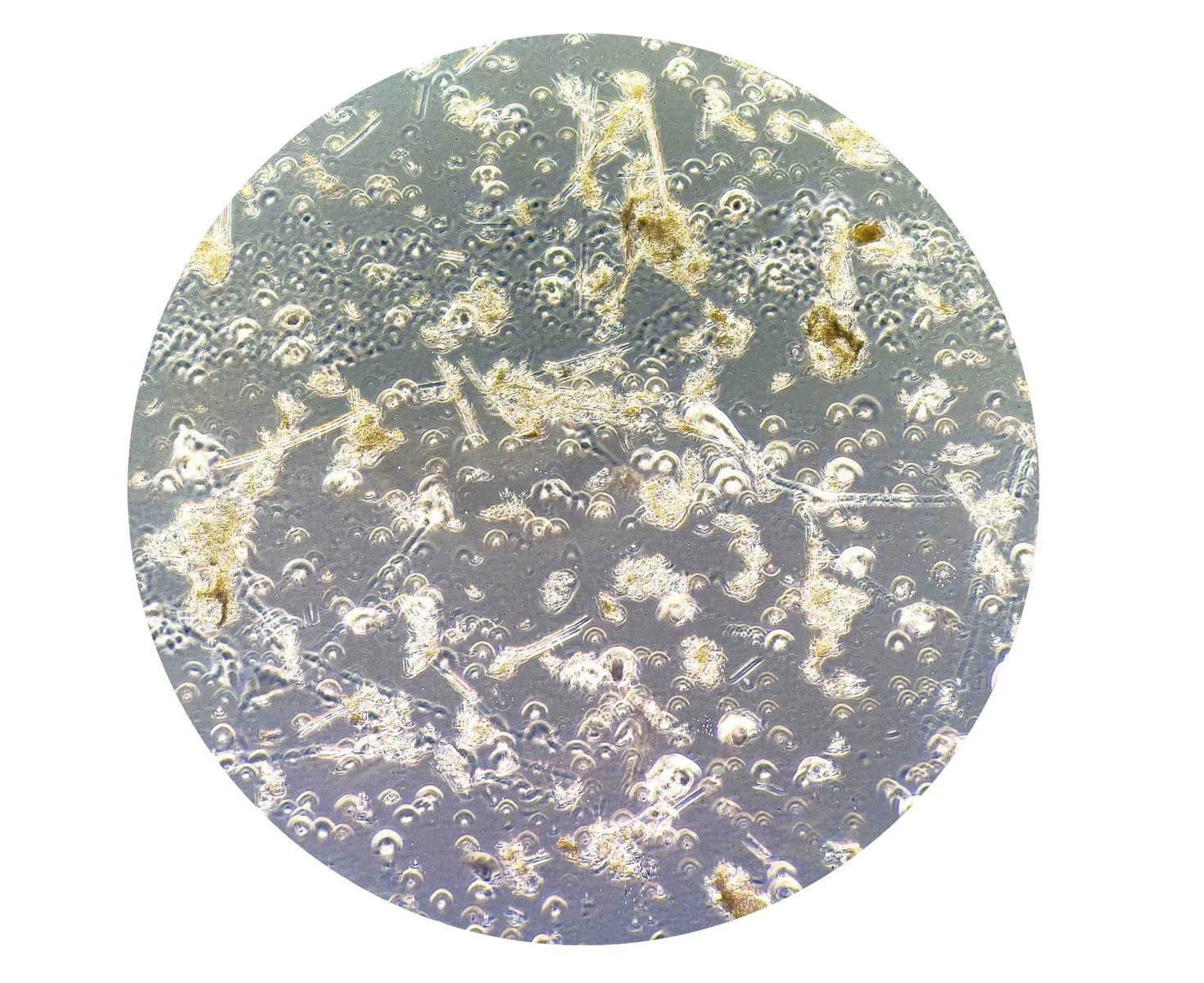
Water samples seen by a light microscope

Water samples seen by a light microscope
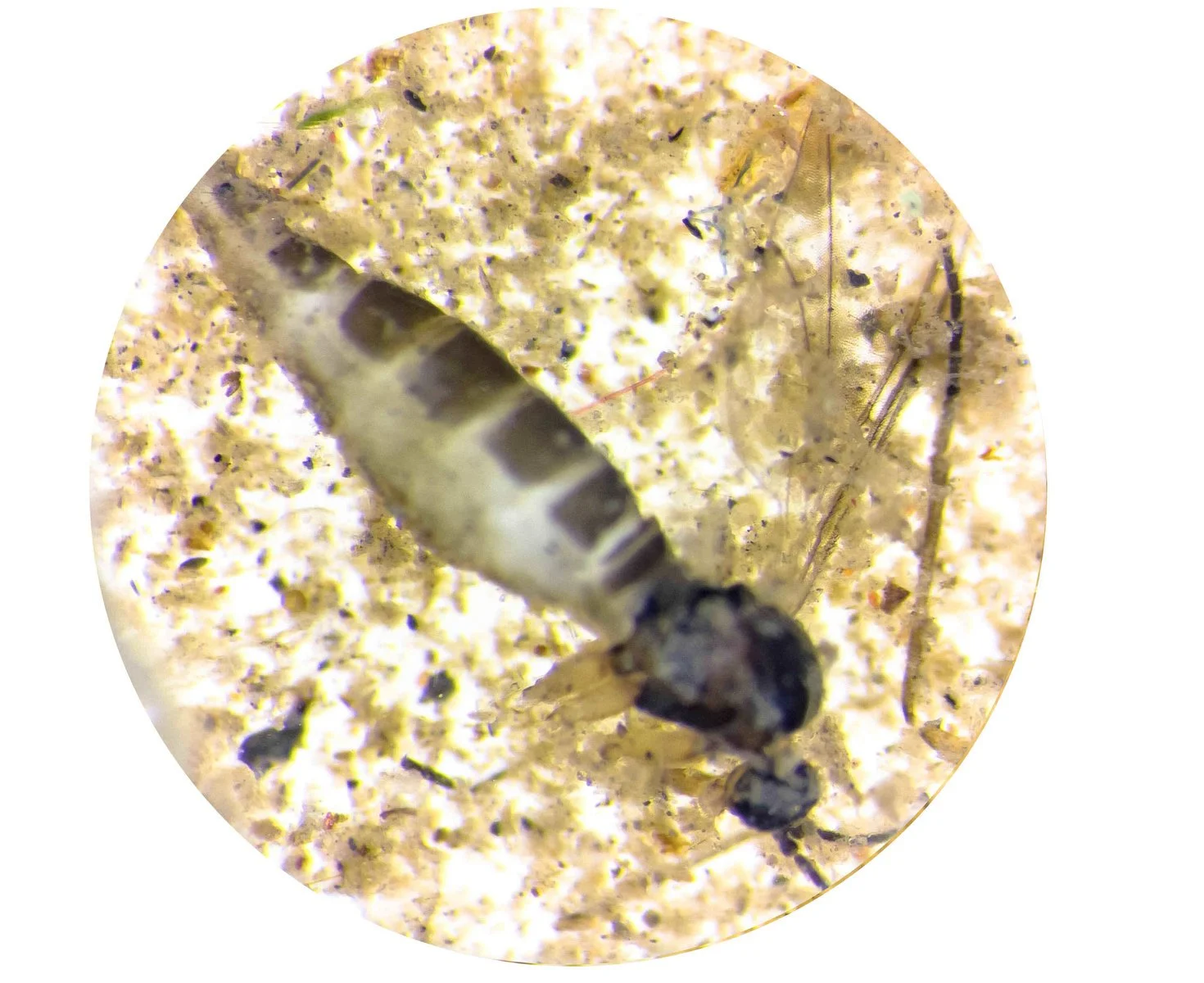
Water samples seen by a light microscope
Resilience, Adaptation, and Revival
At the end of this part of the journey on Qursaya Island — which is not the end of the story, but just the end of a chapter — multiple layers of stories converge in one place:
From plastic fishing as a substitute for declining fish stocks and a way to generate income, to the opportunities women cared for themselves on the island, supporting or entirely taking care of their families.
to the innovative fishing techniques developed by fishermen adapting to environmental changes,to the self-made jobs and solutions just to survive amid growing economic hardship,
to the Nile crawfish that once seemed like a curse but became a valuable source of income,
to the replanting of papyrus and lotus flowers –plants that nearly vanished from Egypt, despite their rich heritage and symbolism in ancient Egyptian civilization.
Through weaving these stories together, one clearly see how the island’s residents show a persistent will to live, adapt, learn, and revive what was once lost.
The lotus flowers, rising from mud and swamps, opening their petals to the world and facing the sun, have long symbolised purity, rebirth, and enlightenment in Egyptian civilisation.

